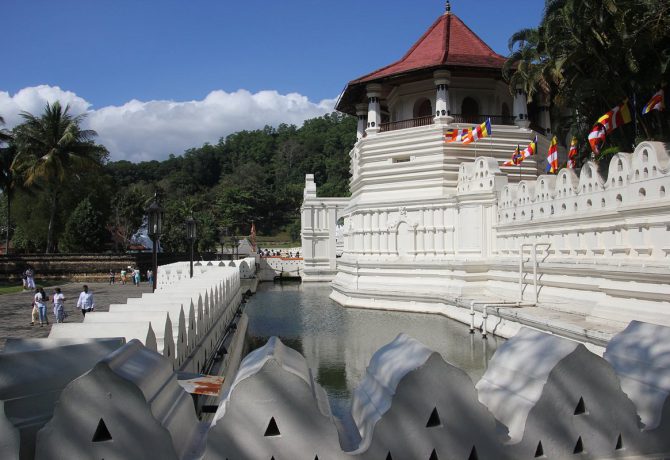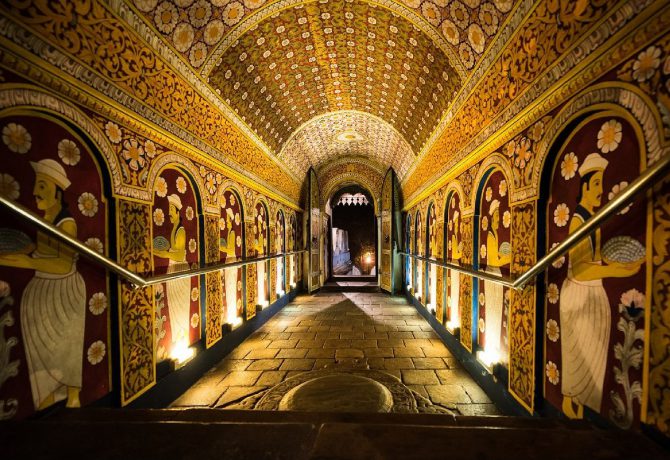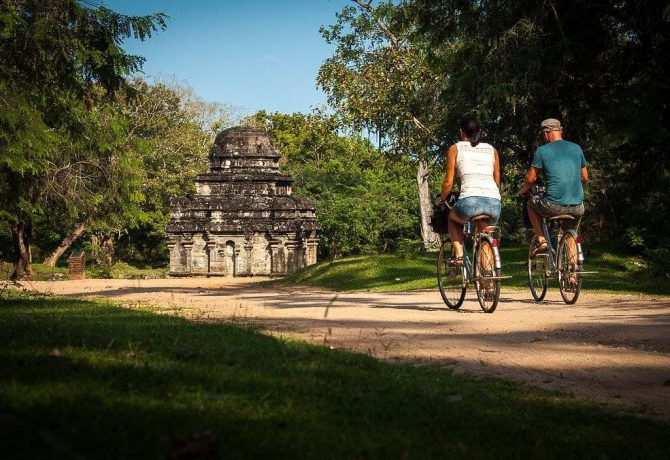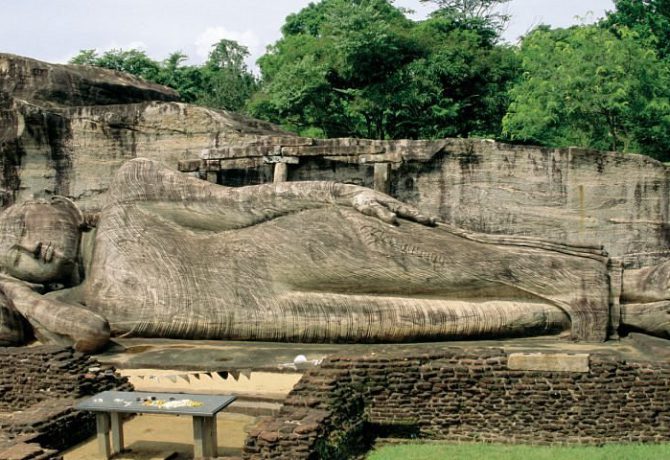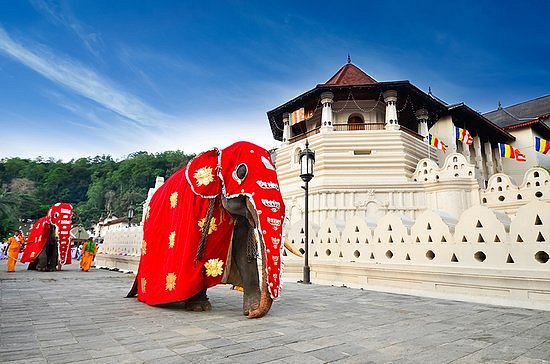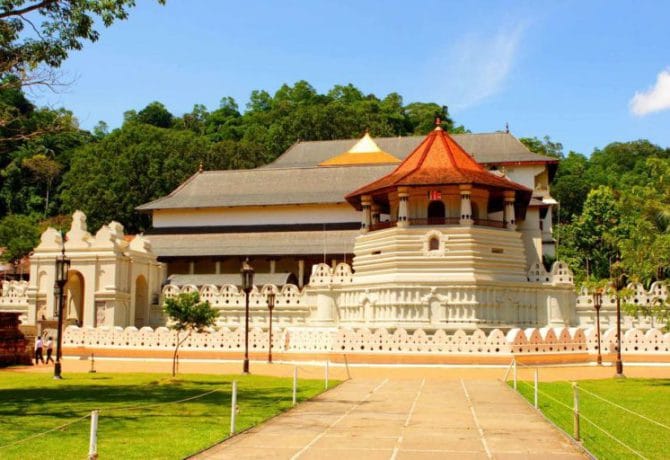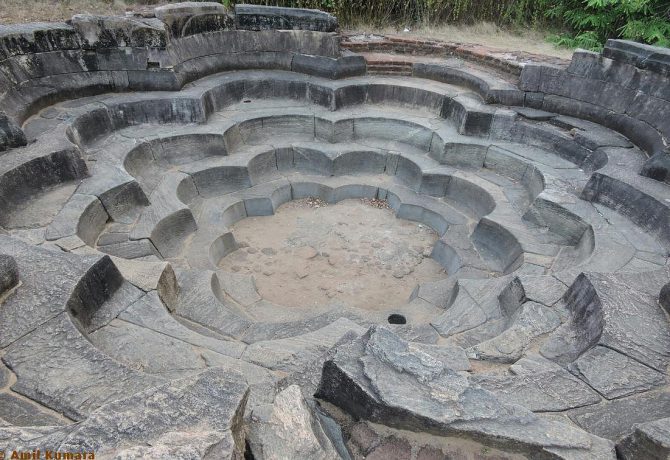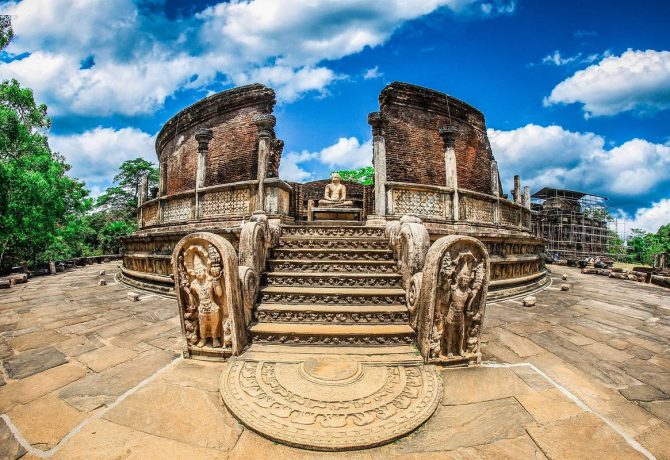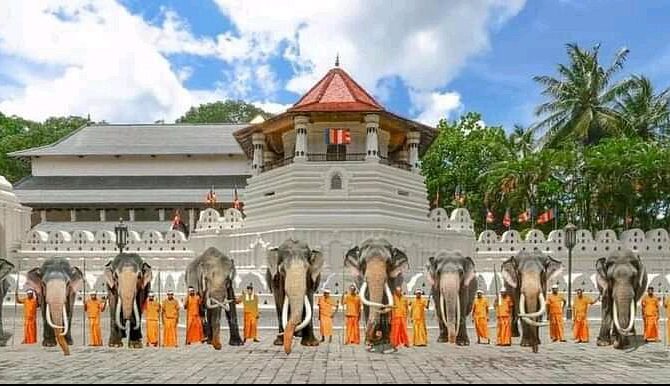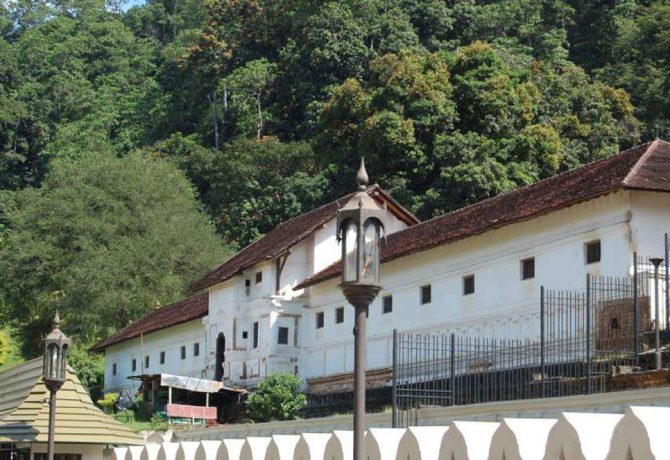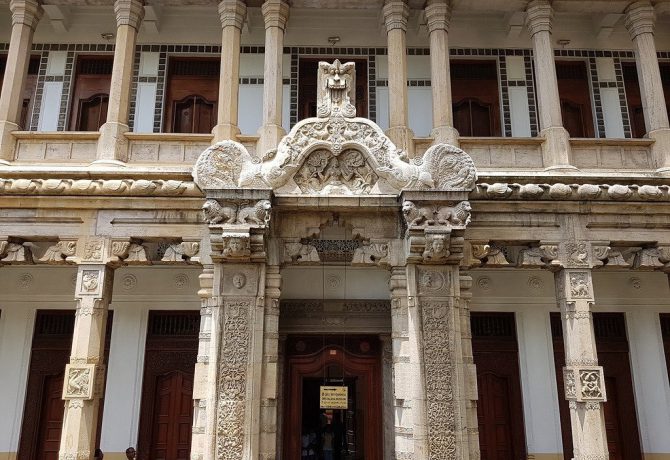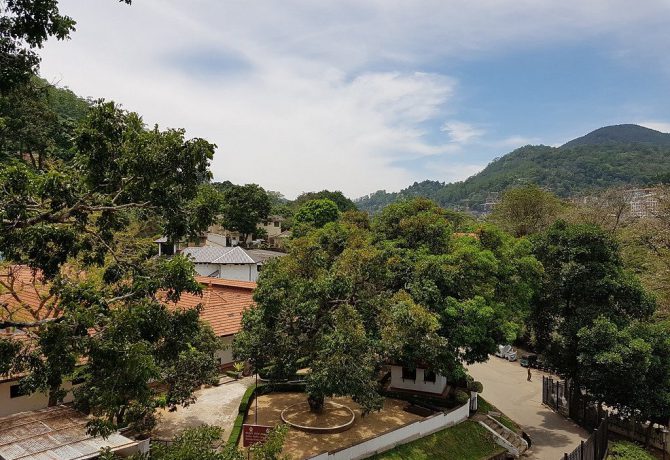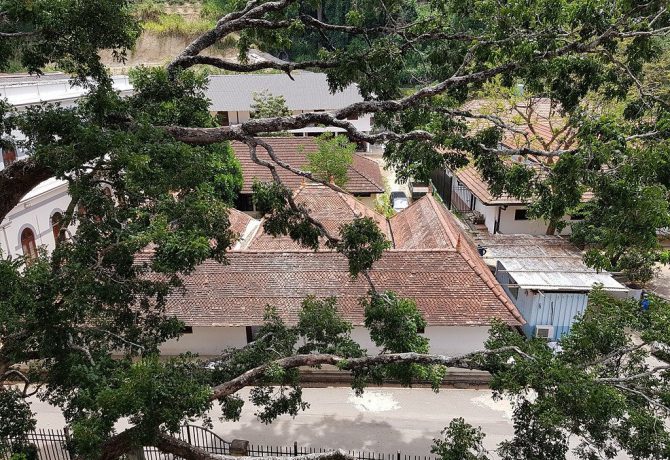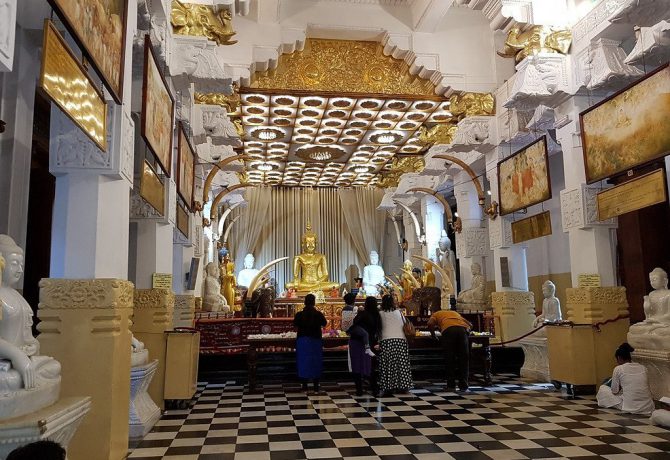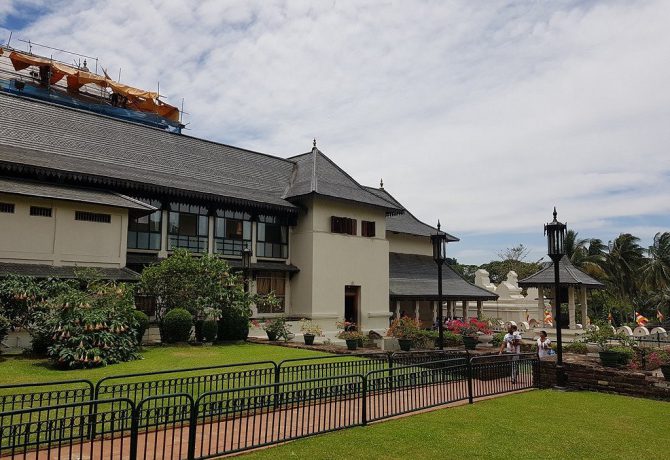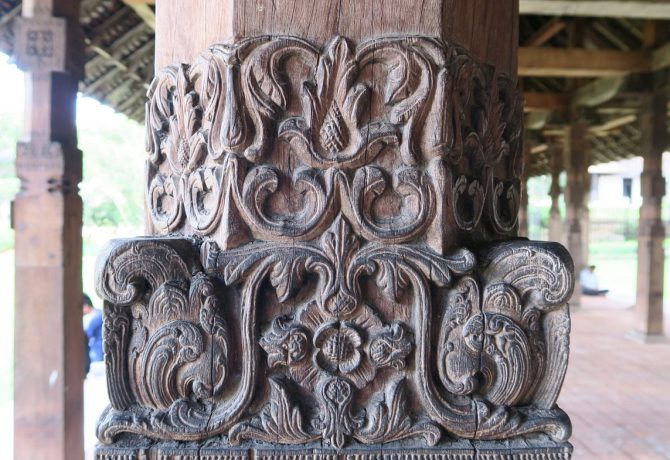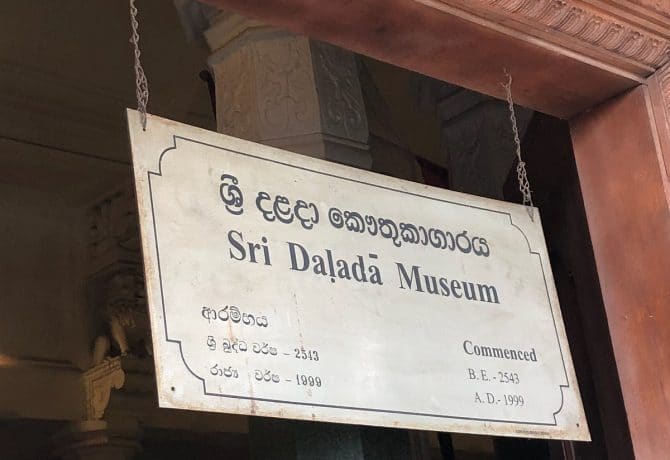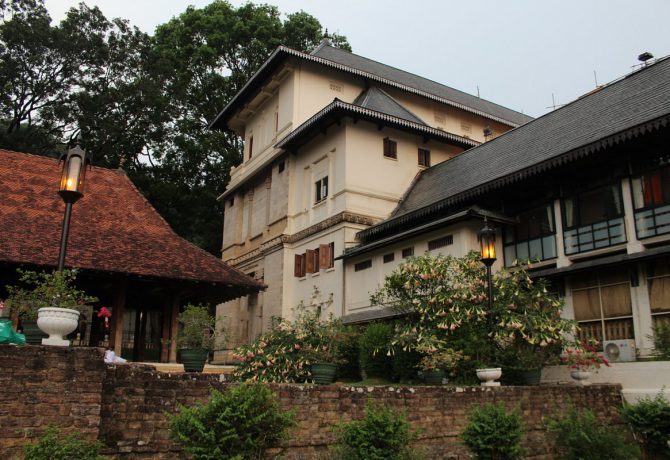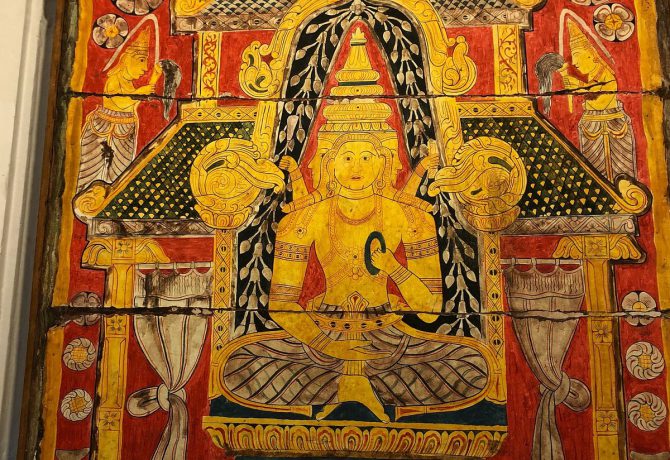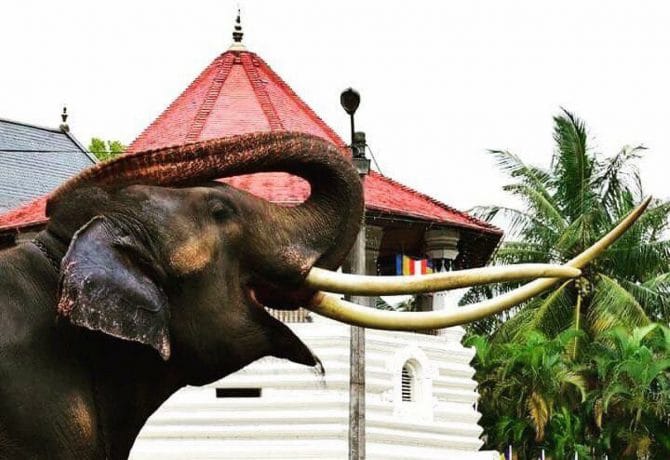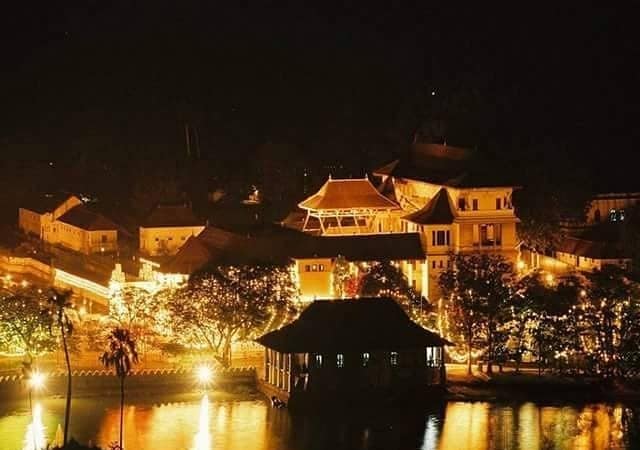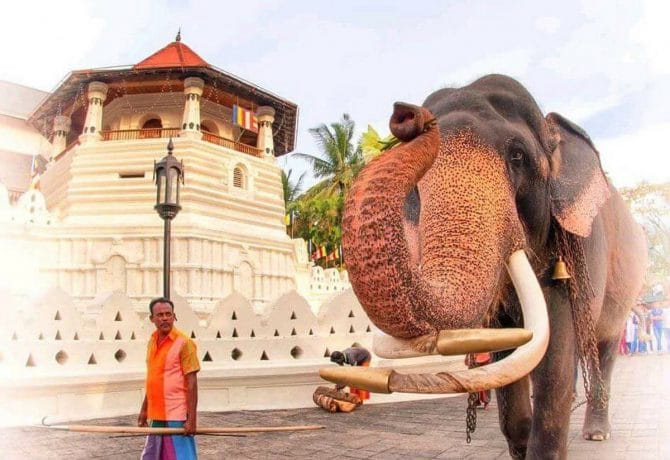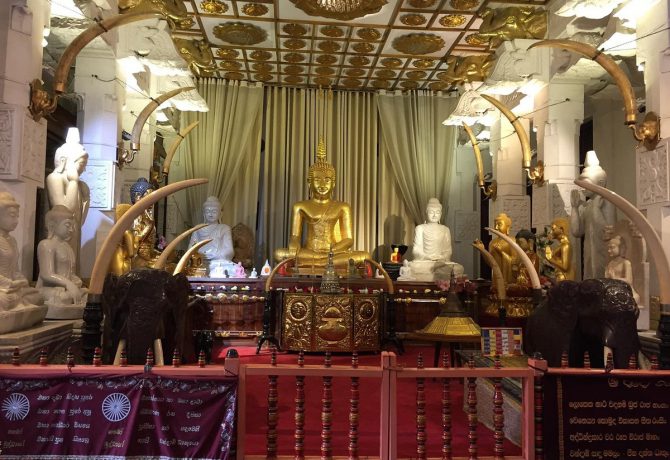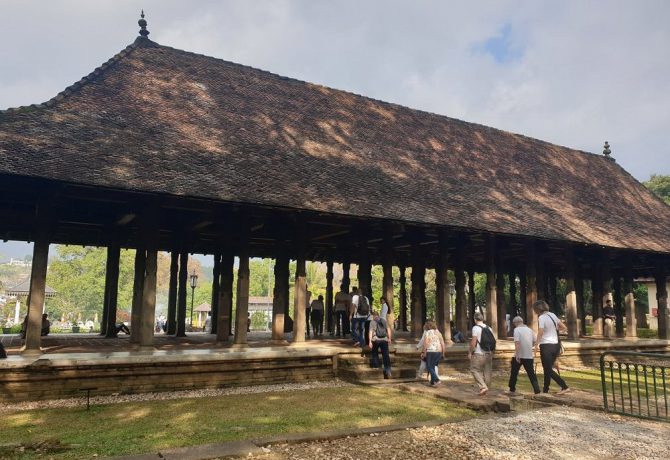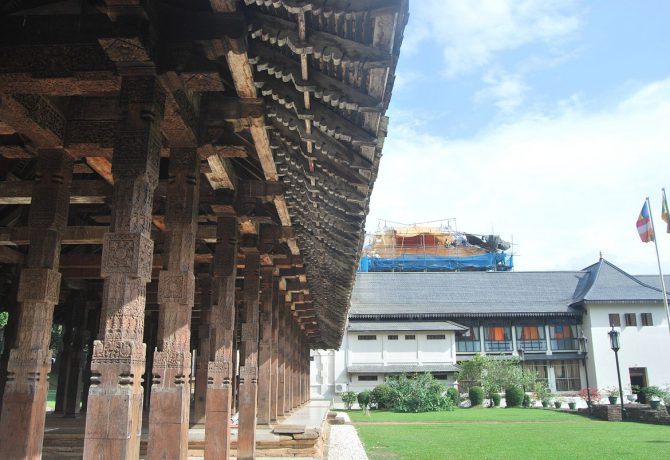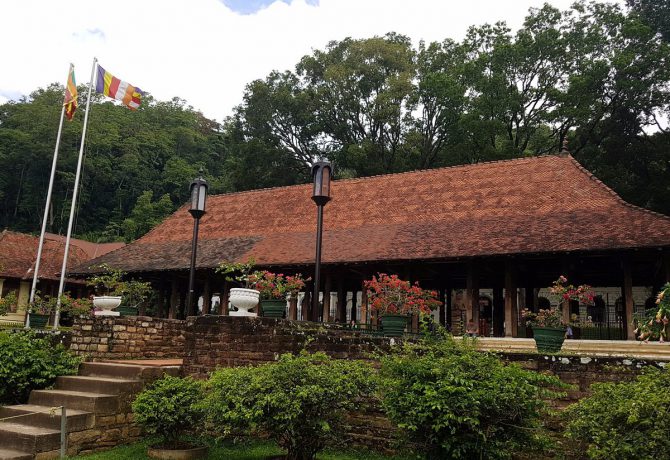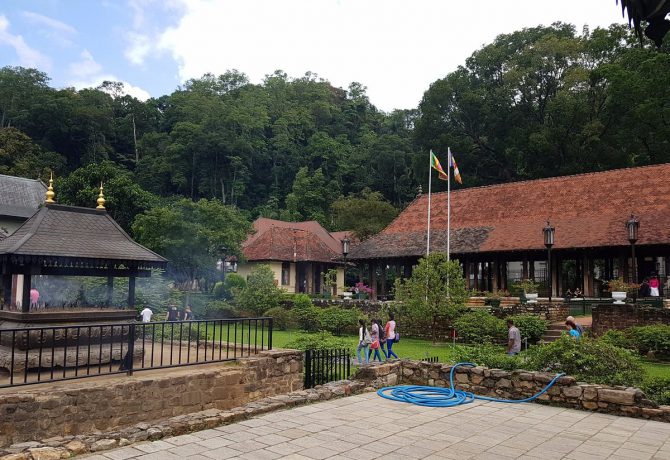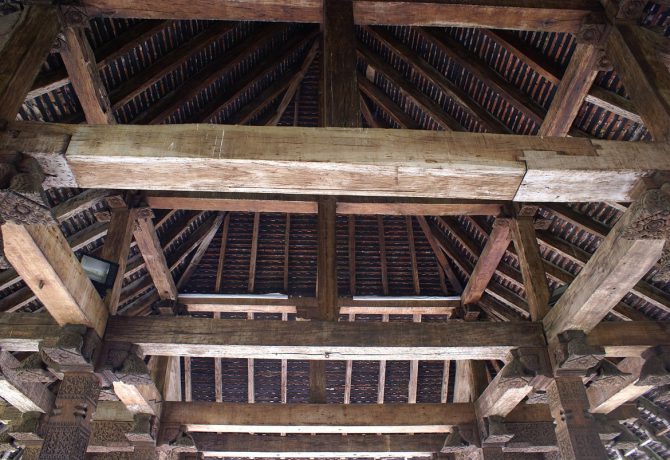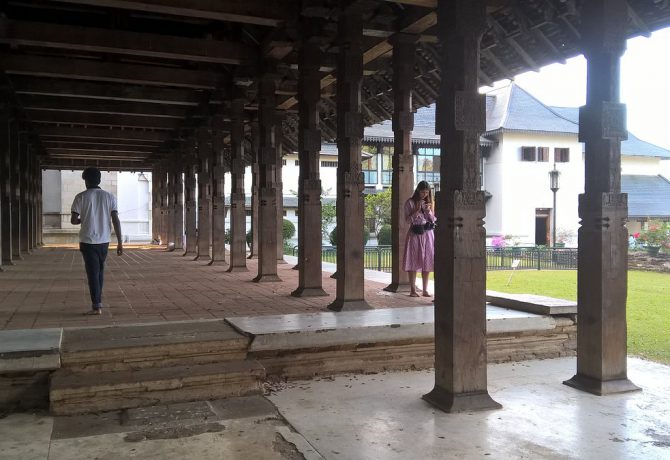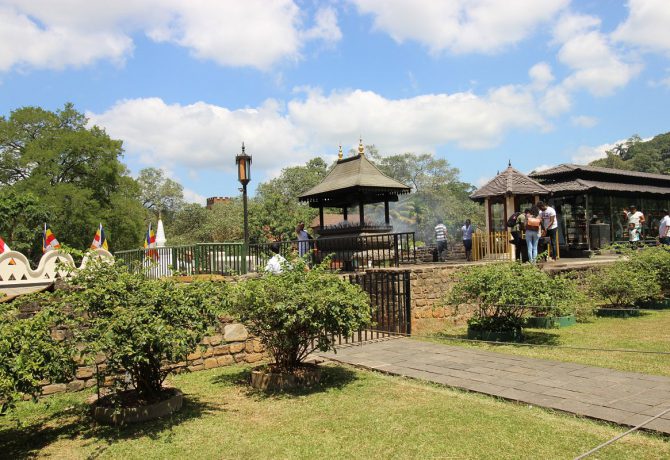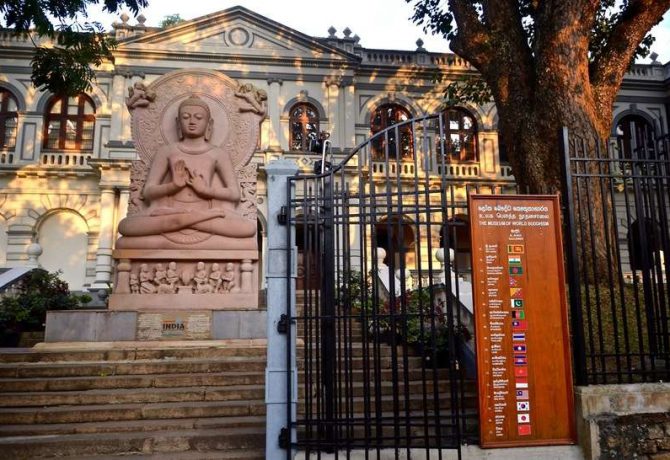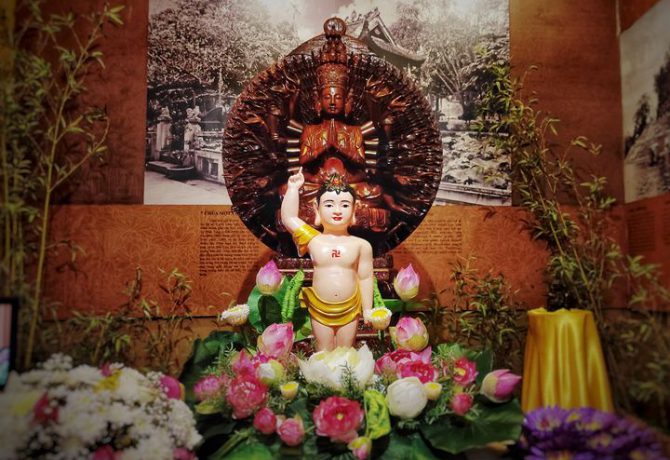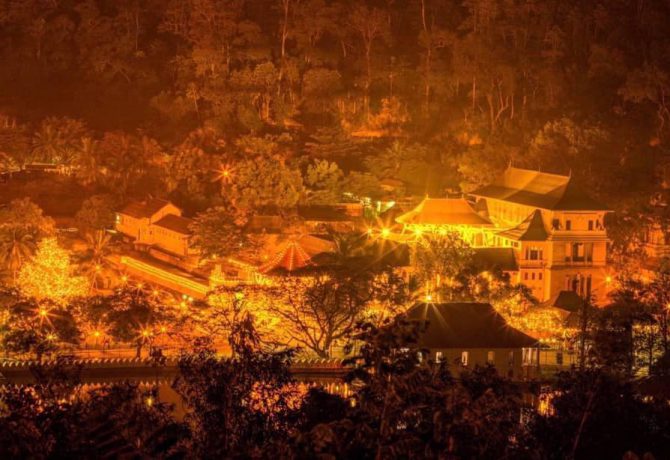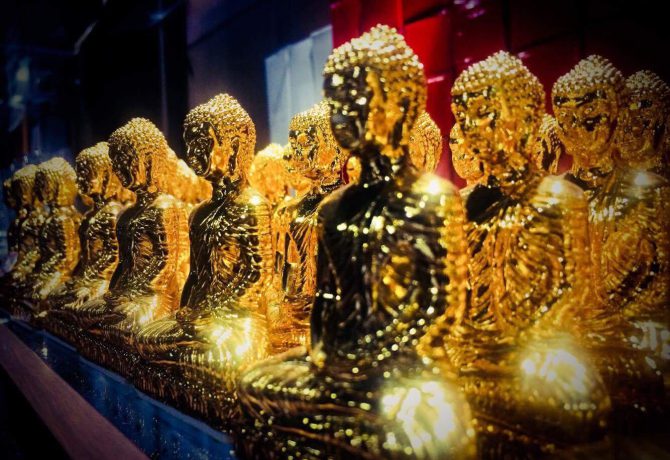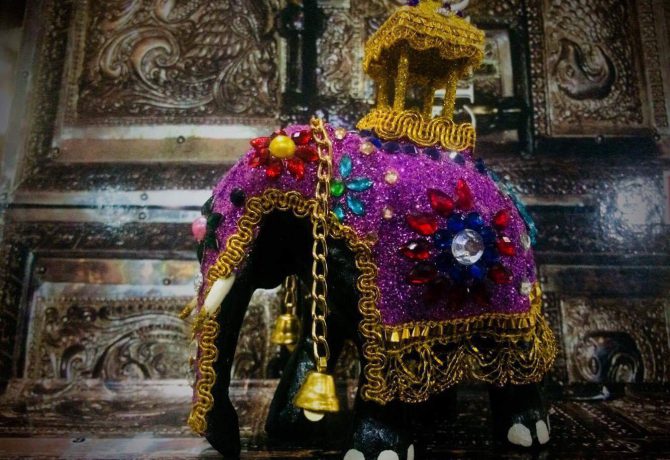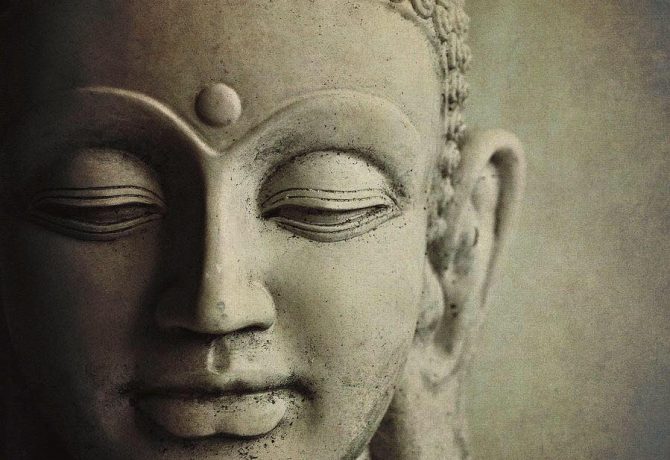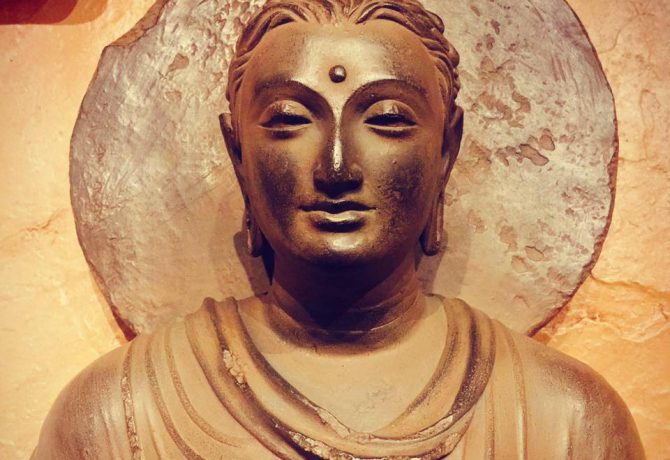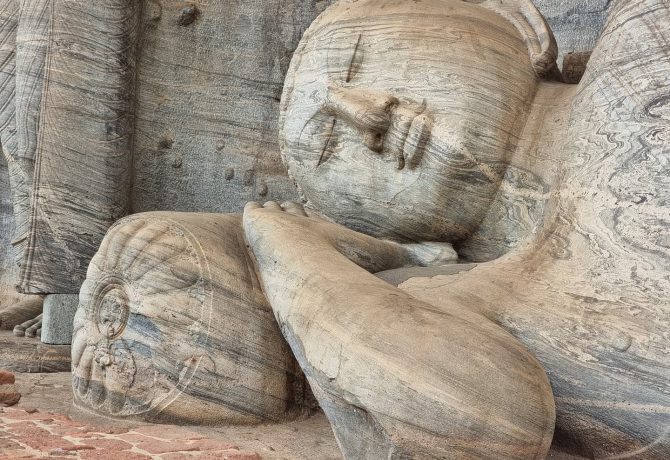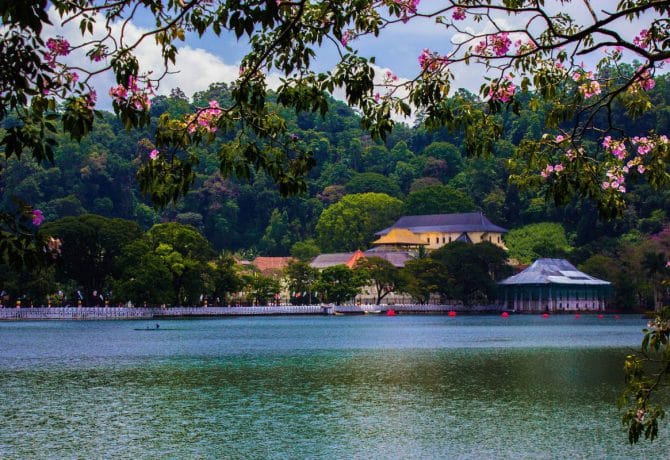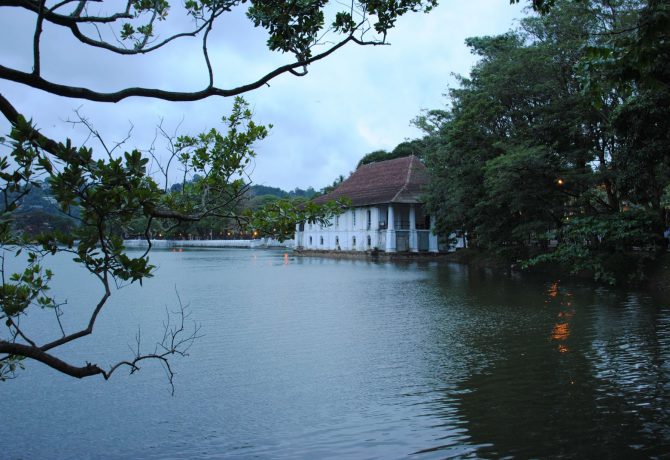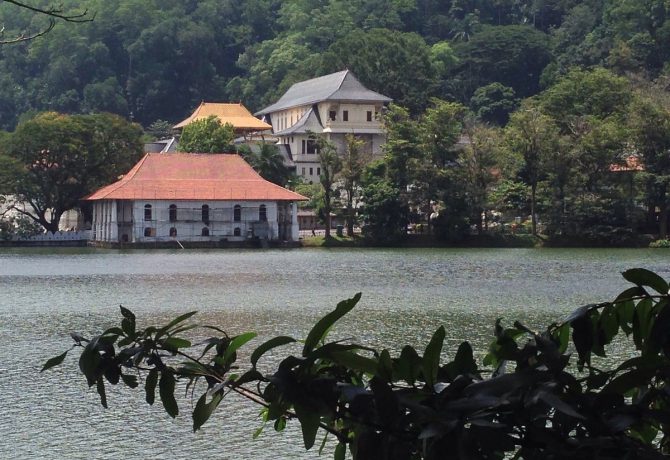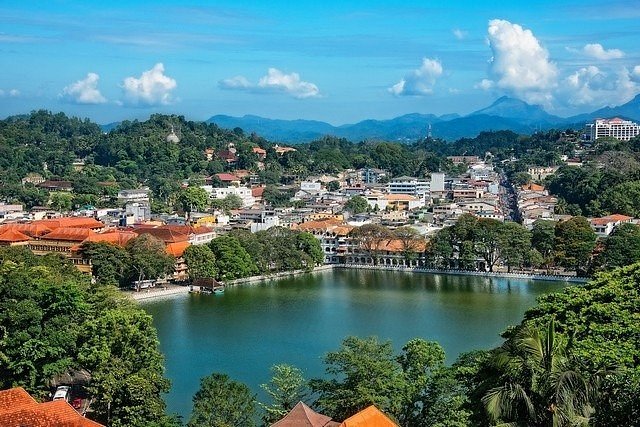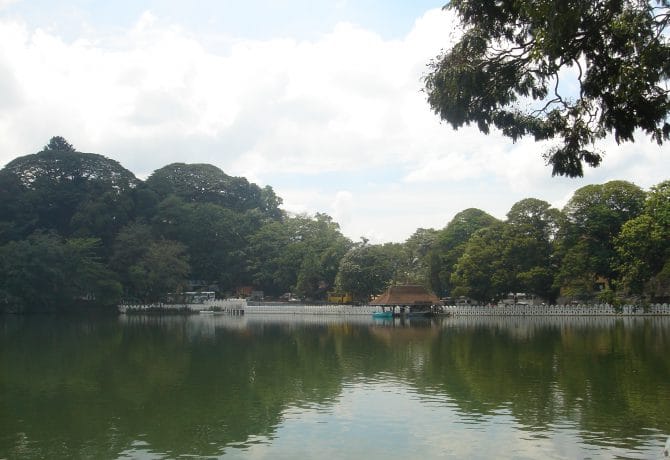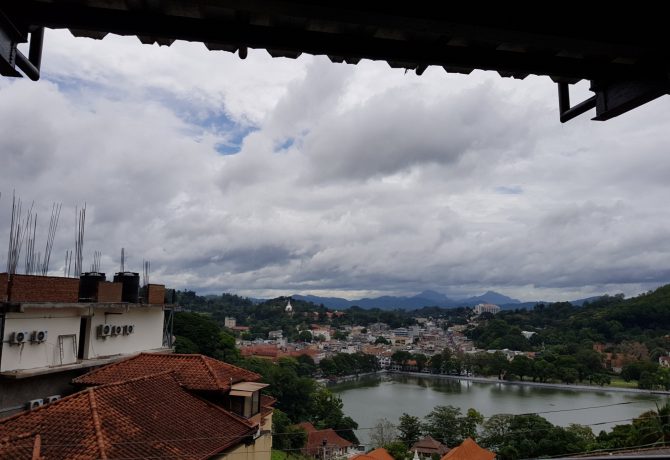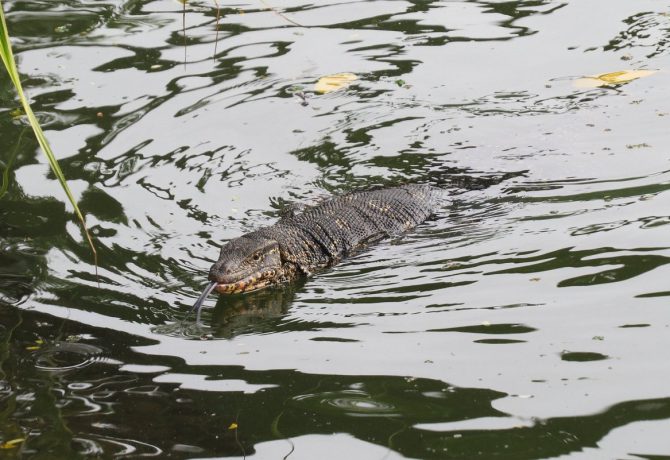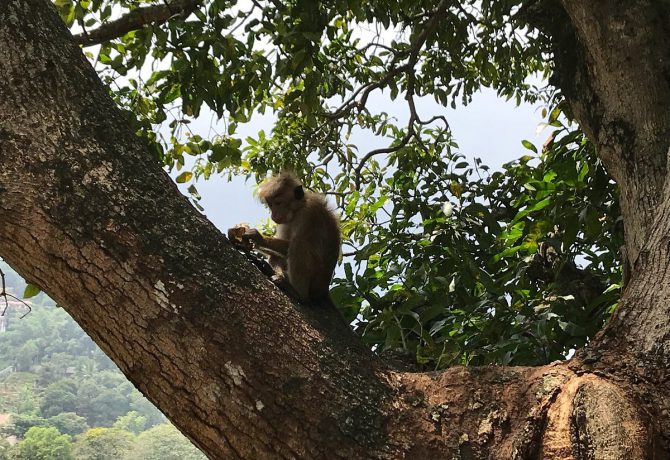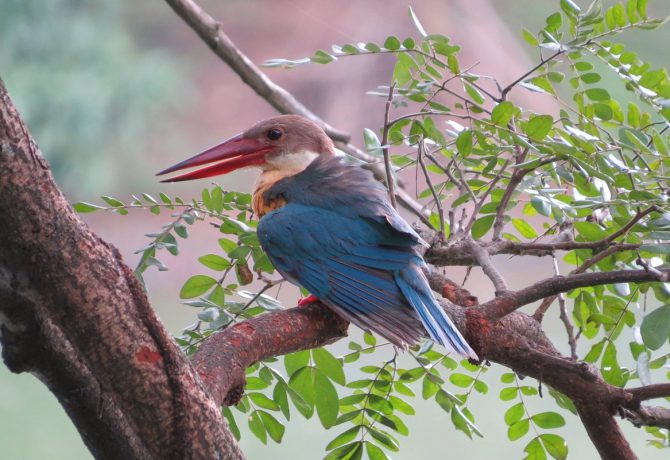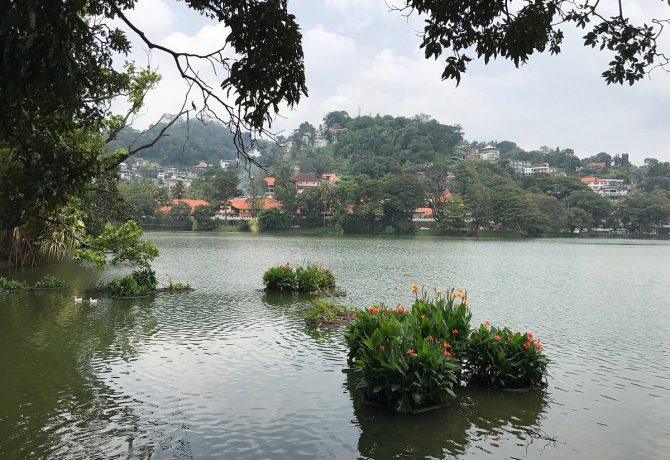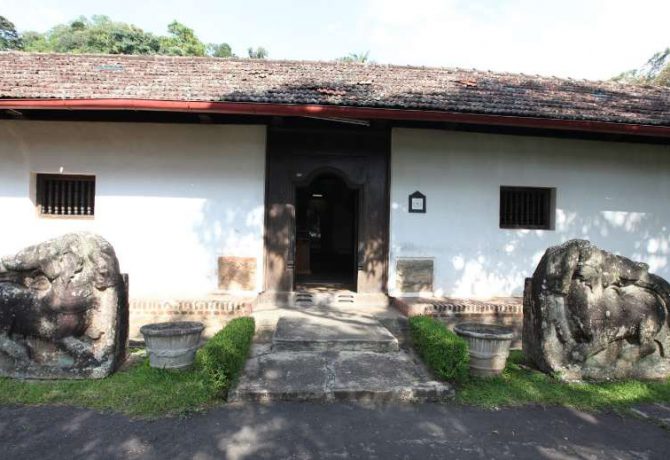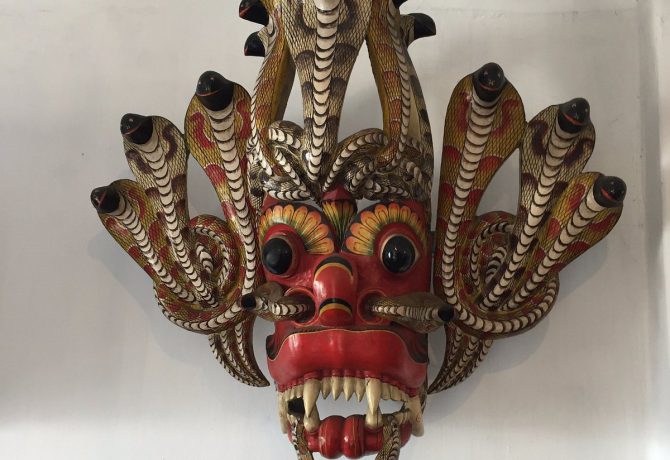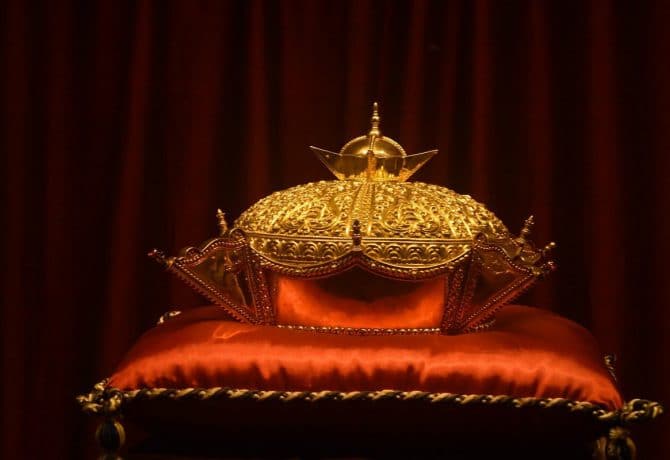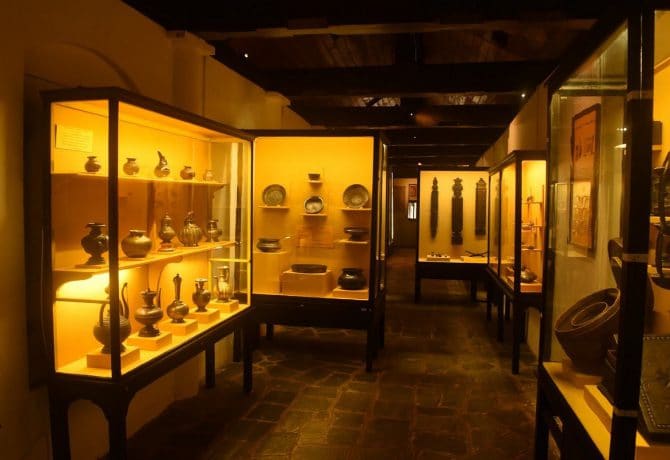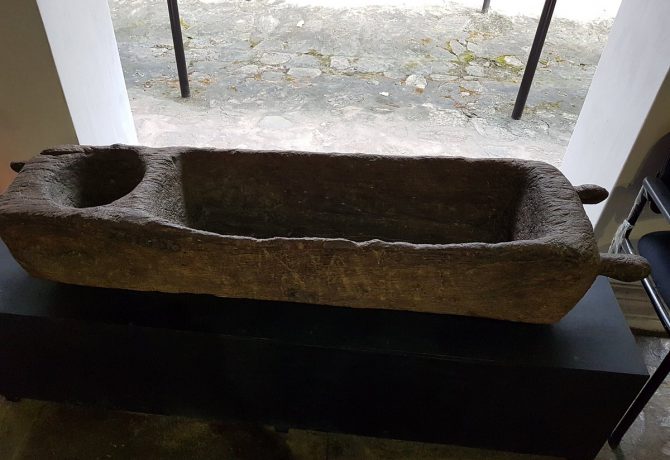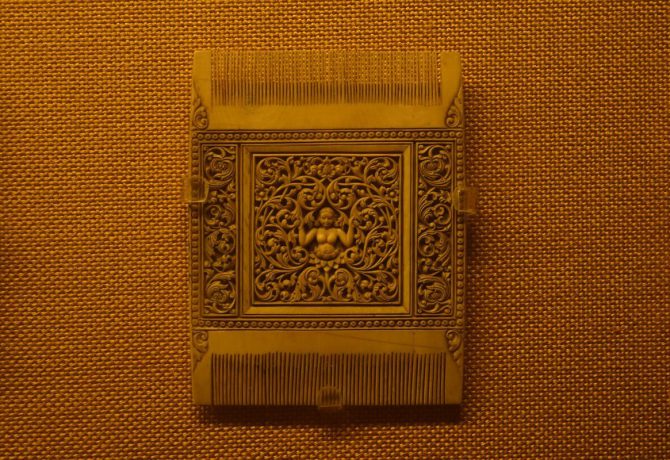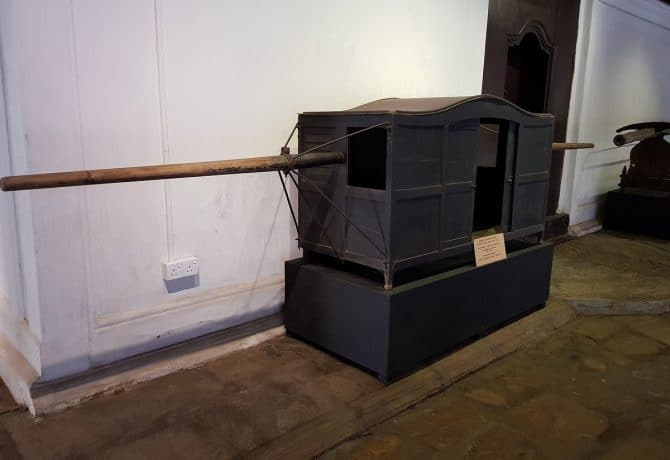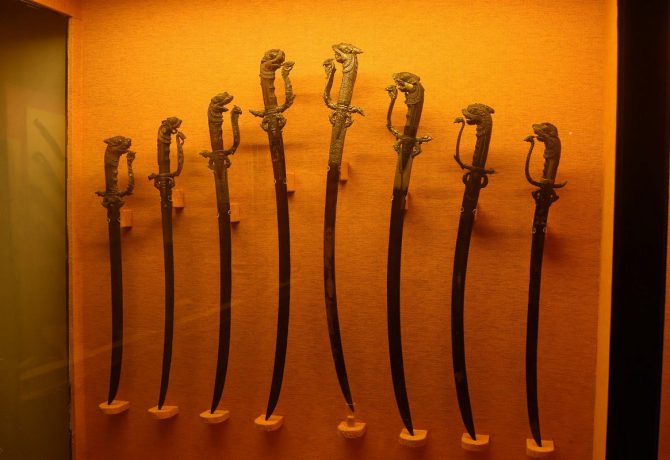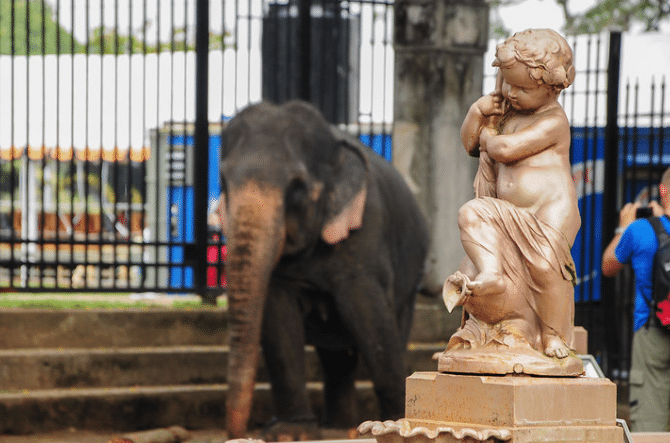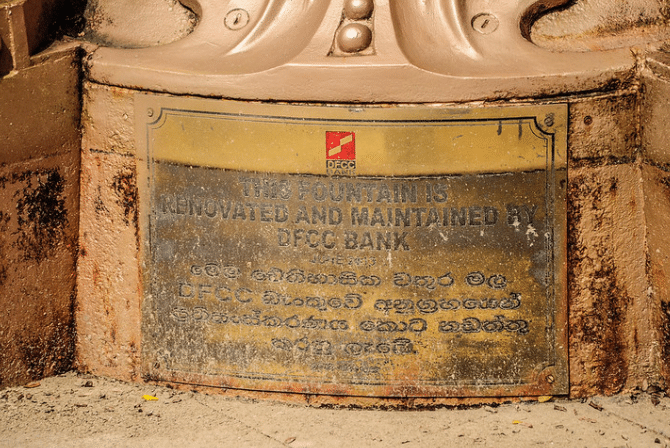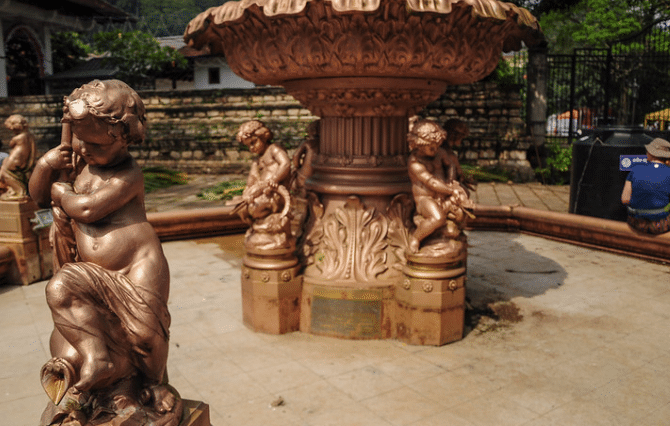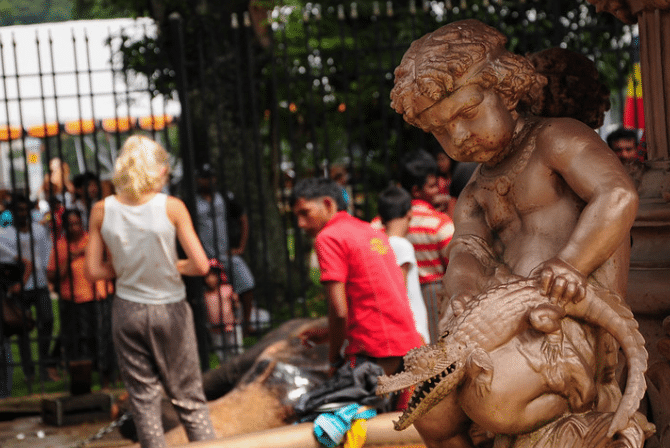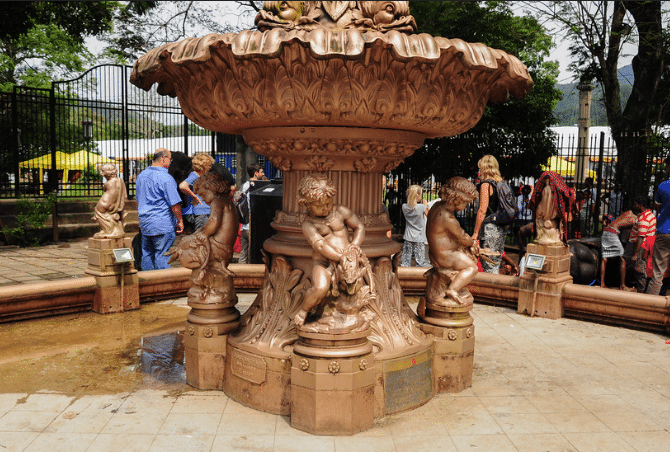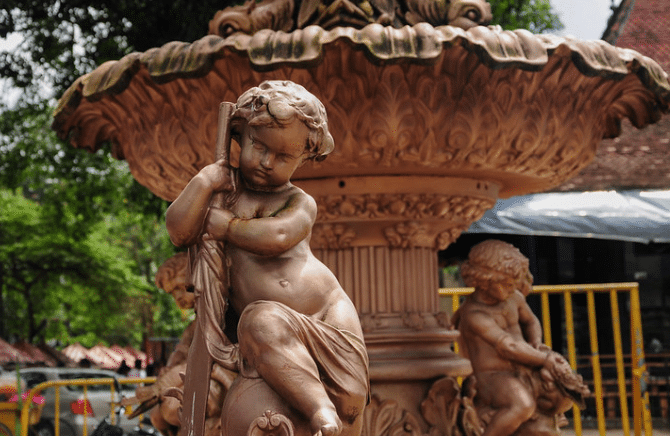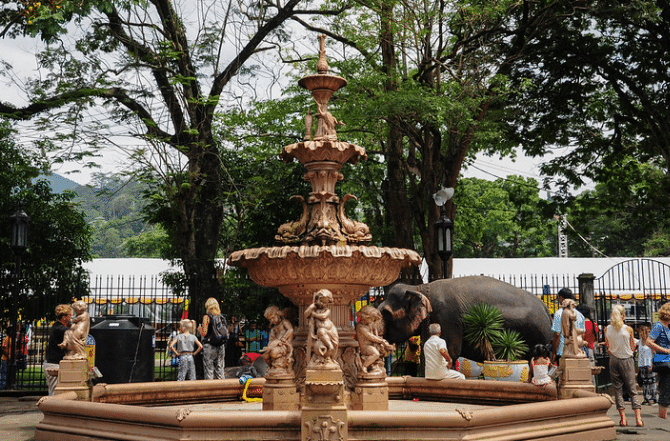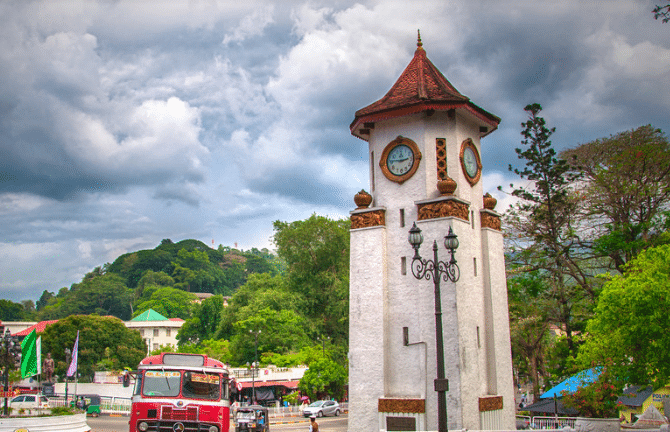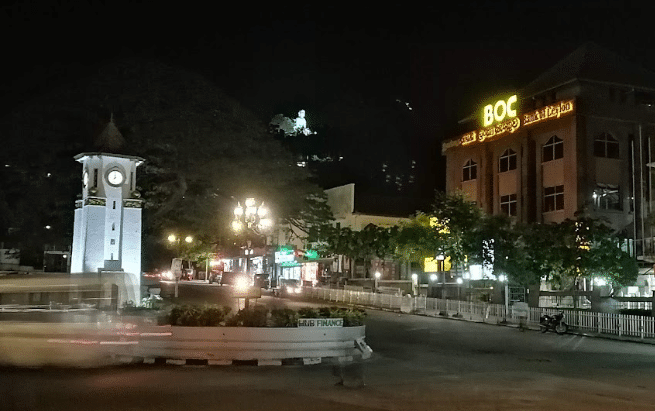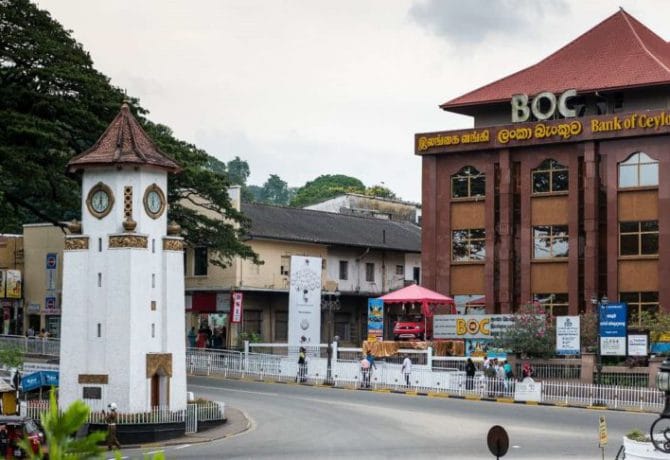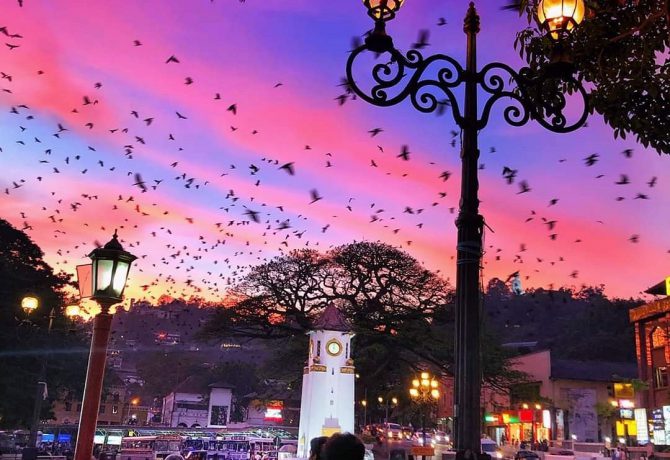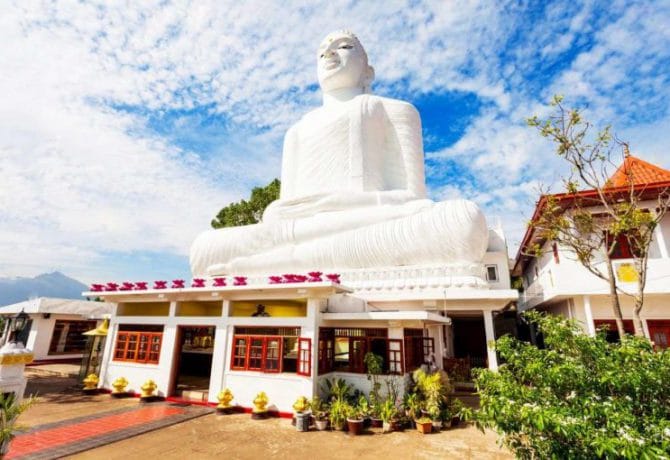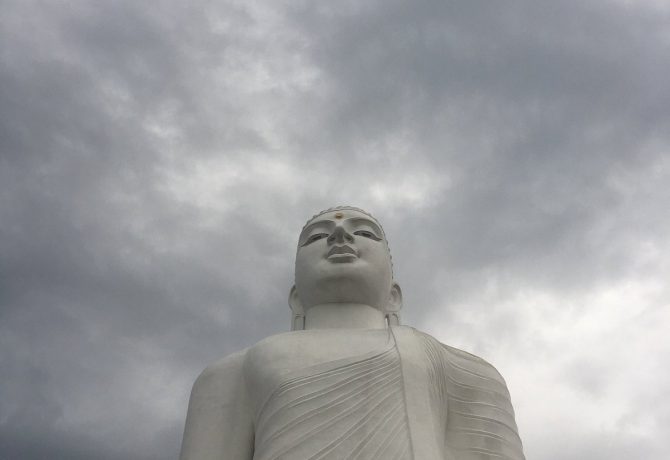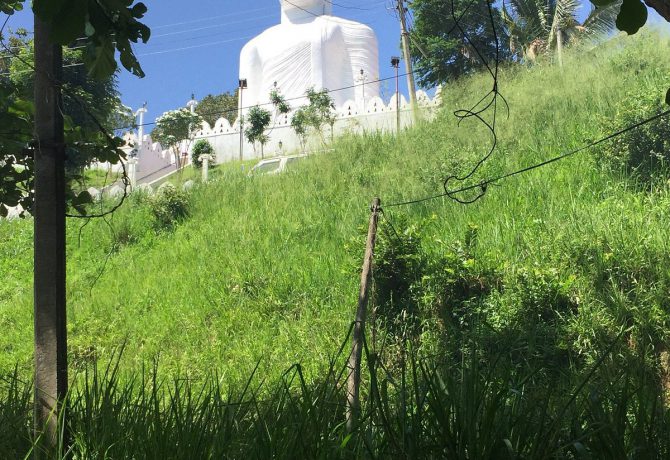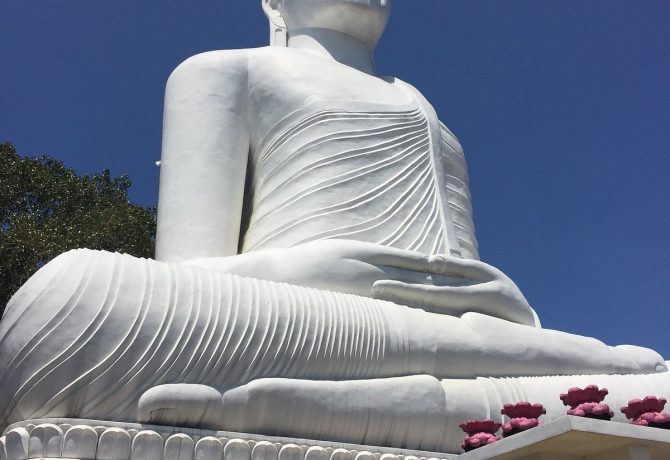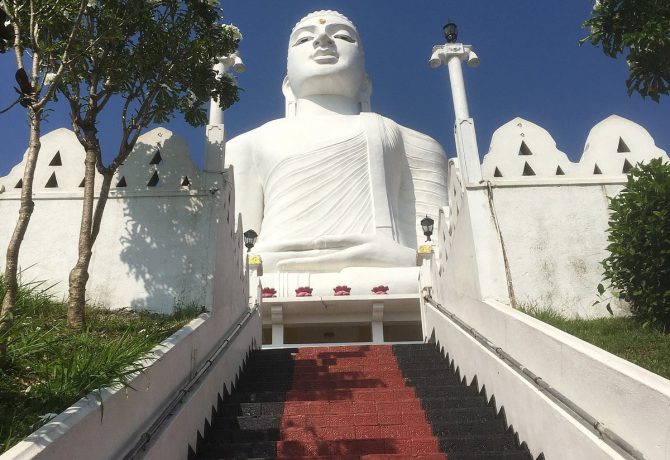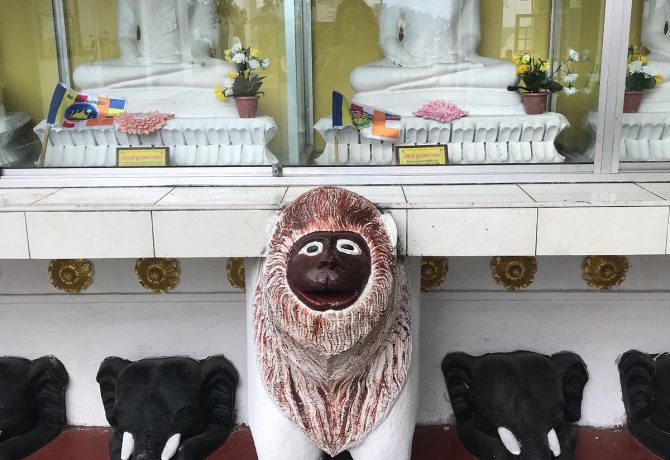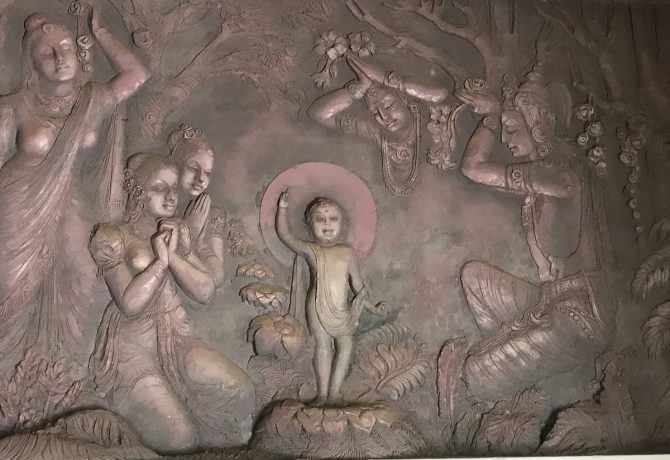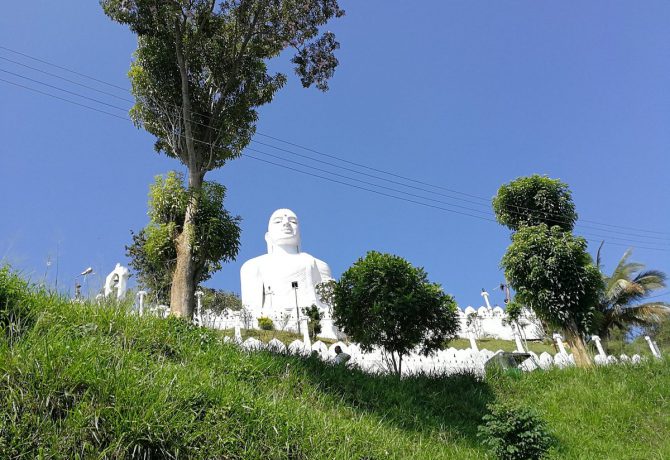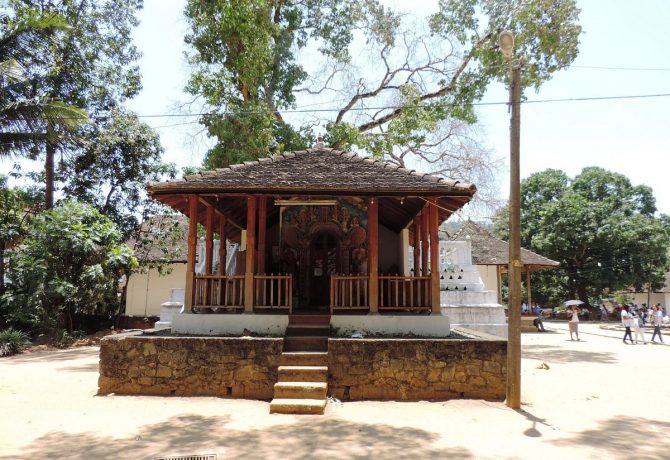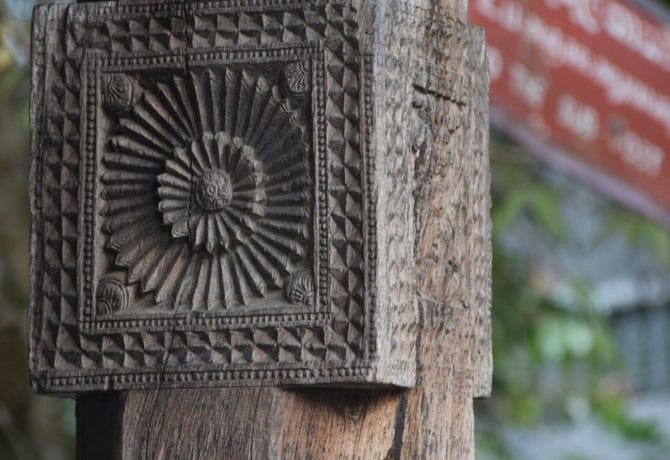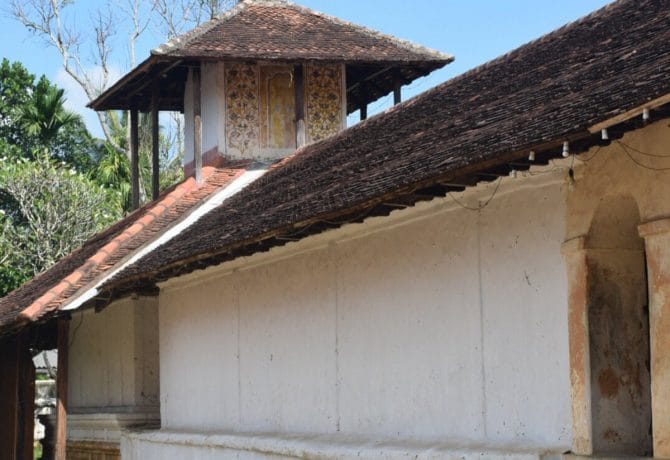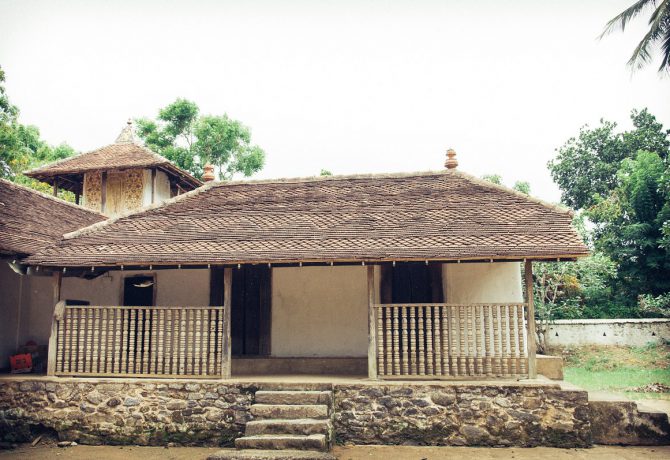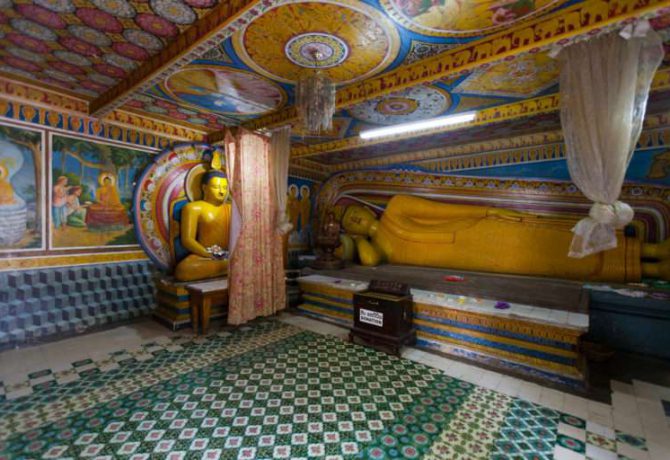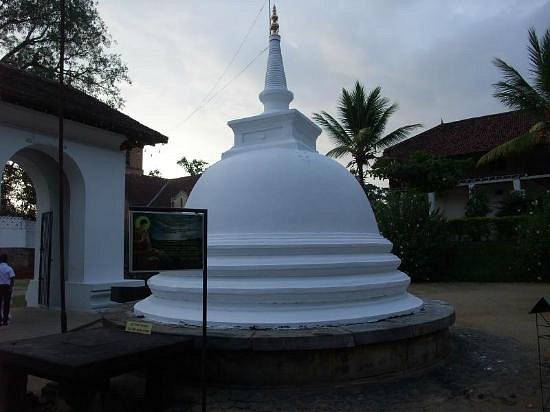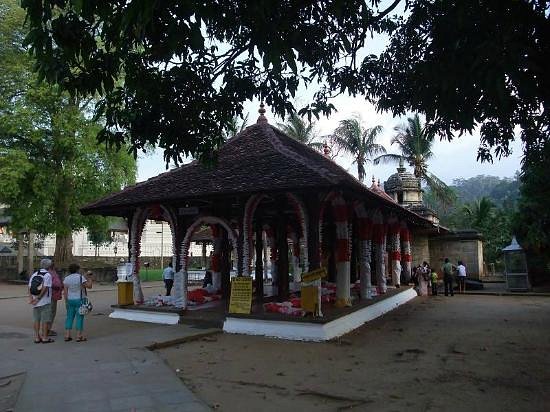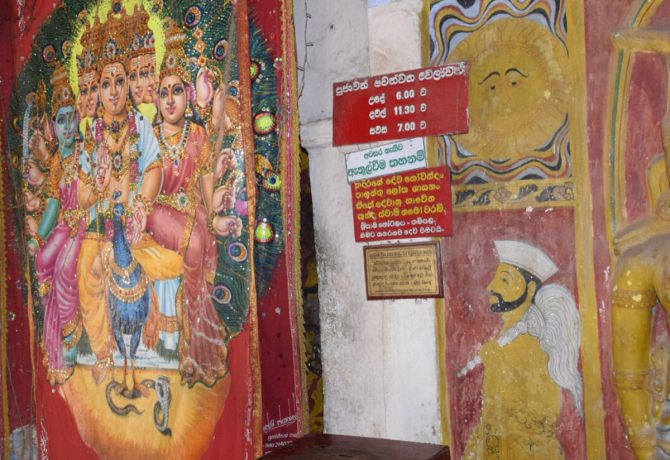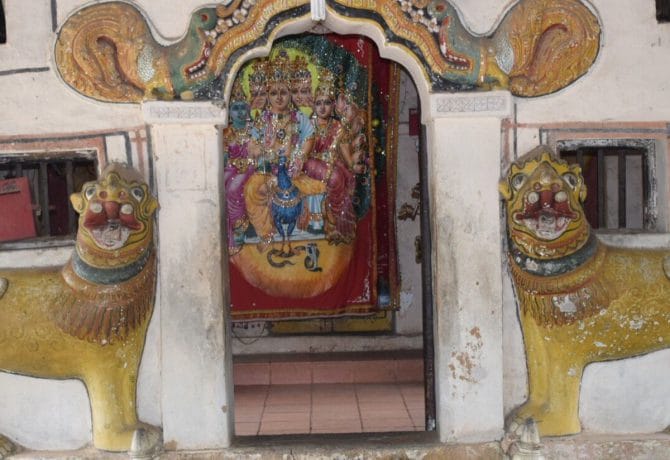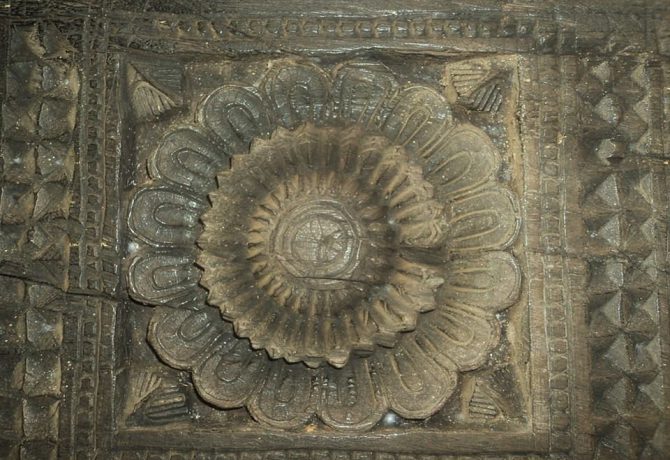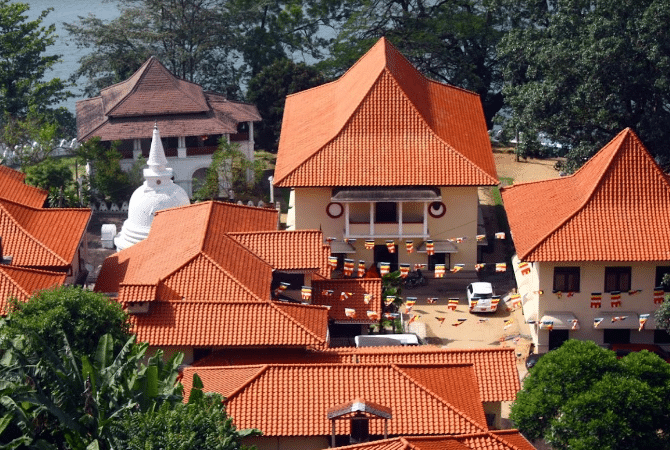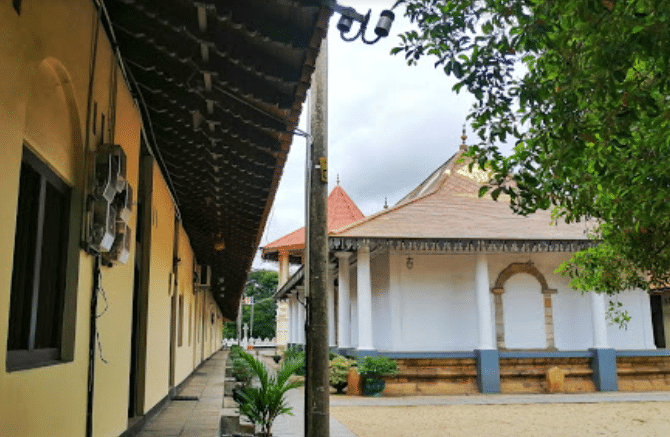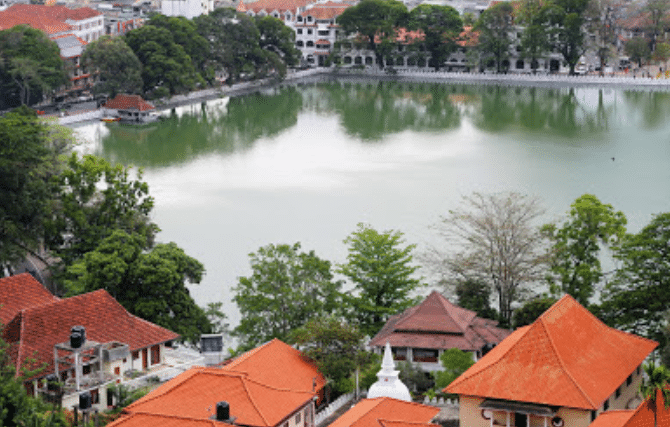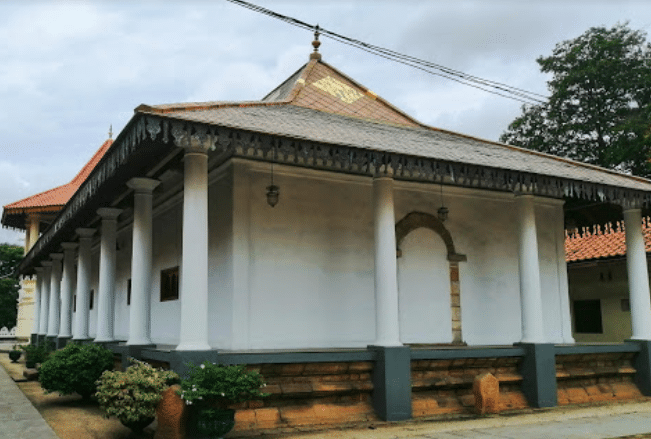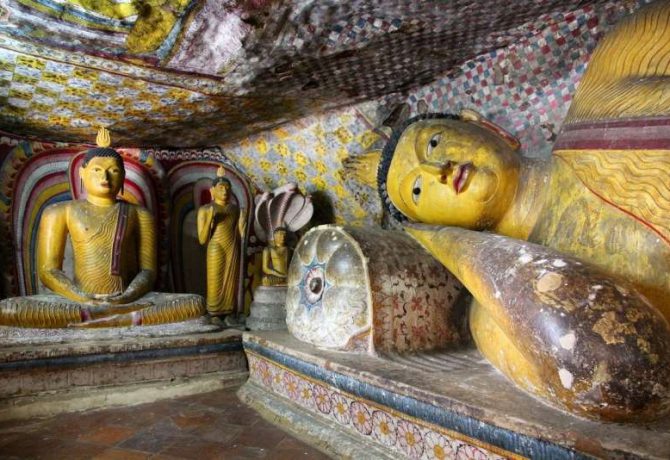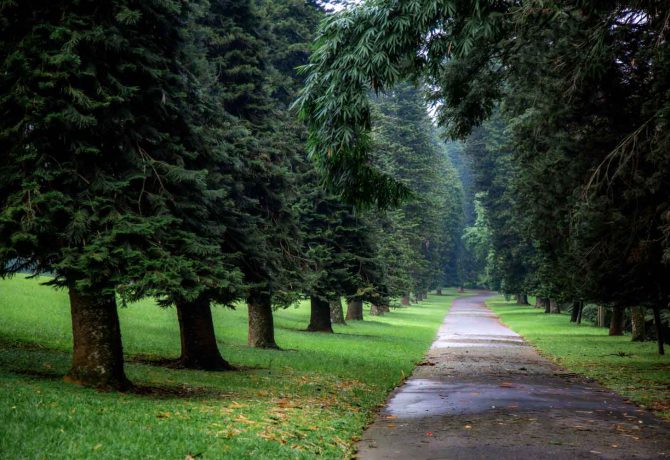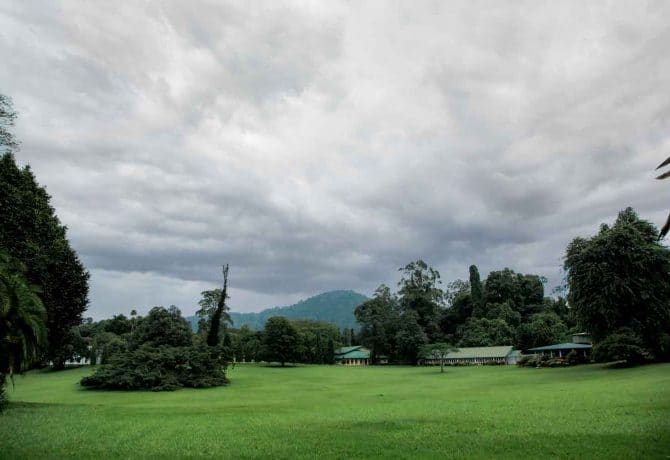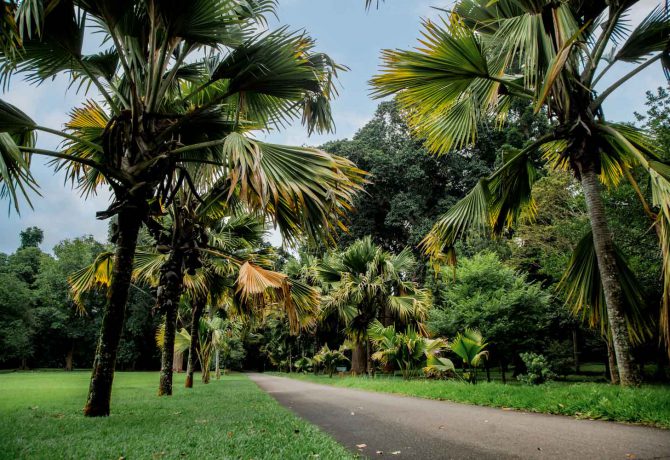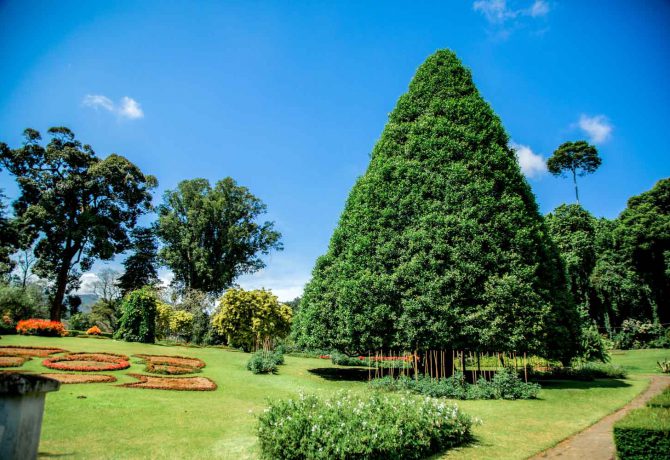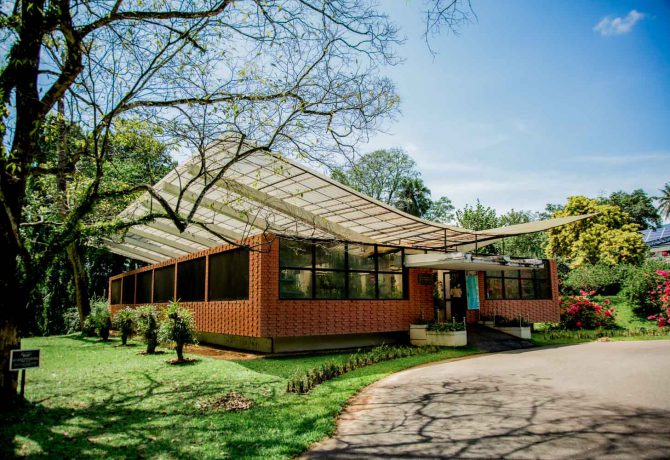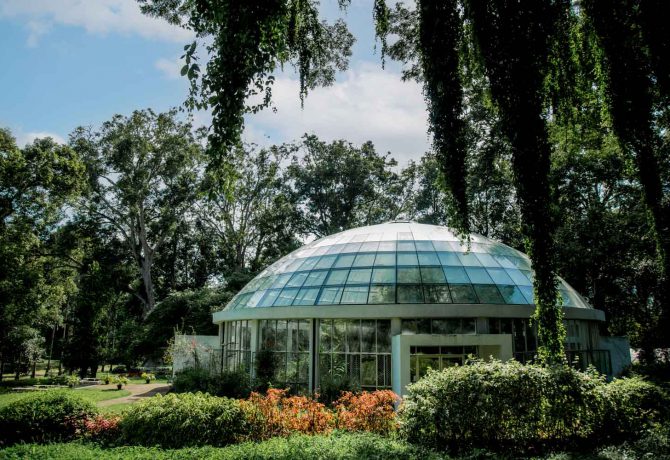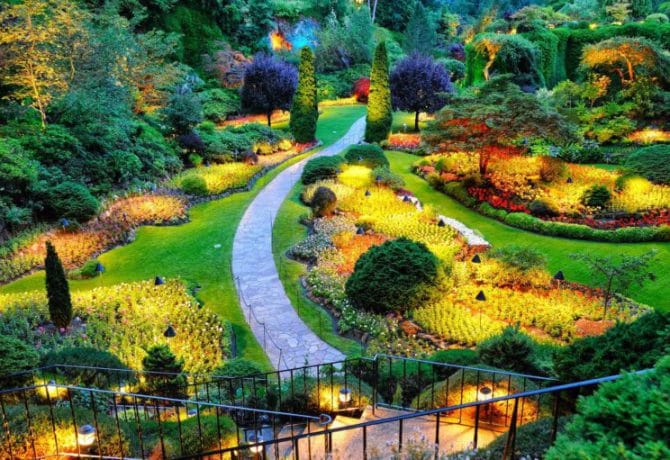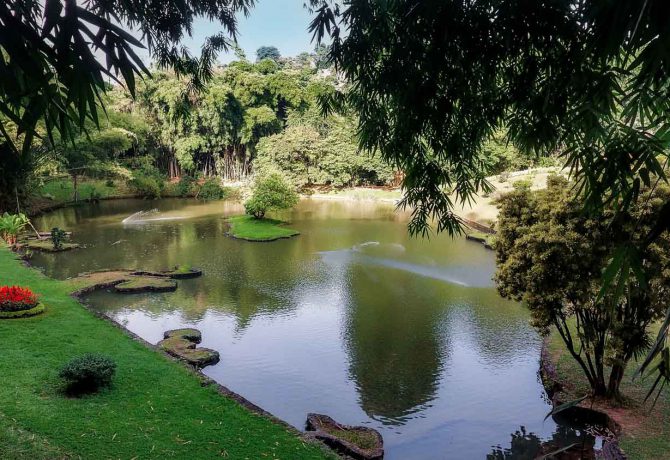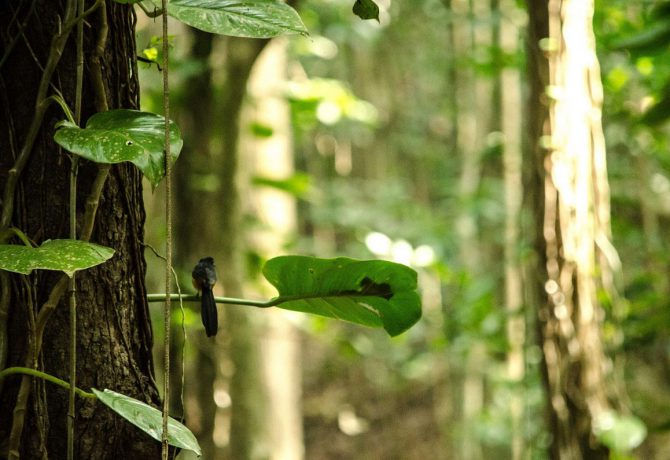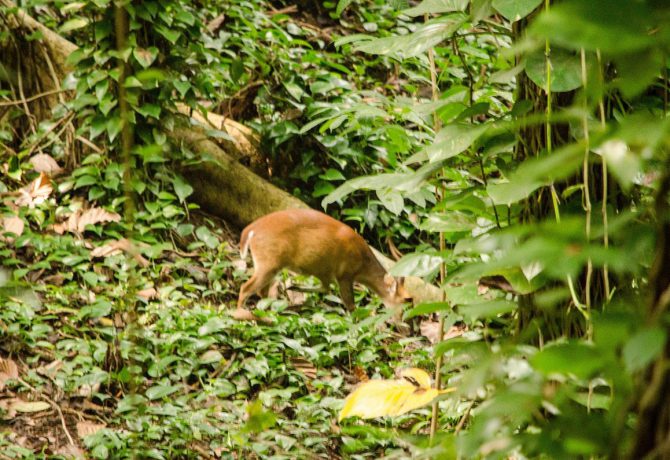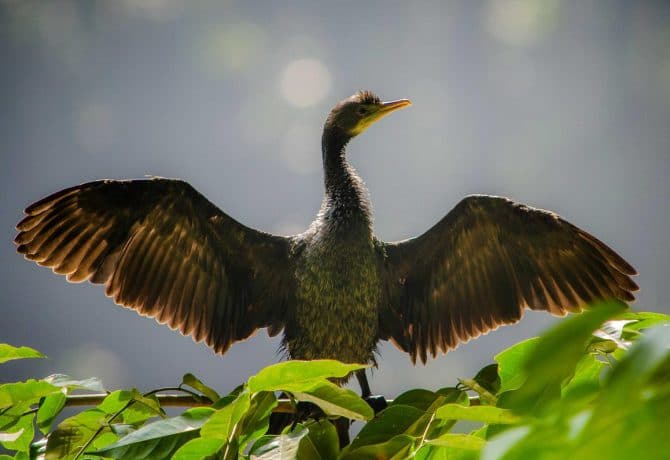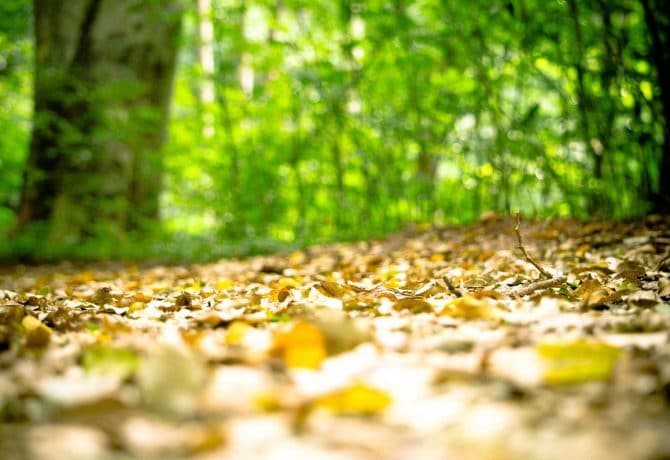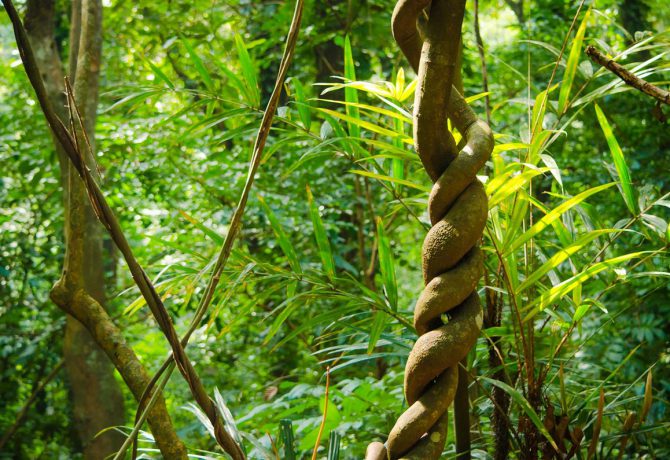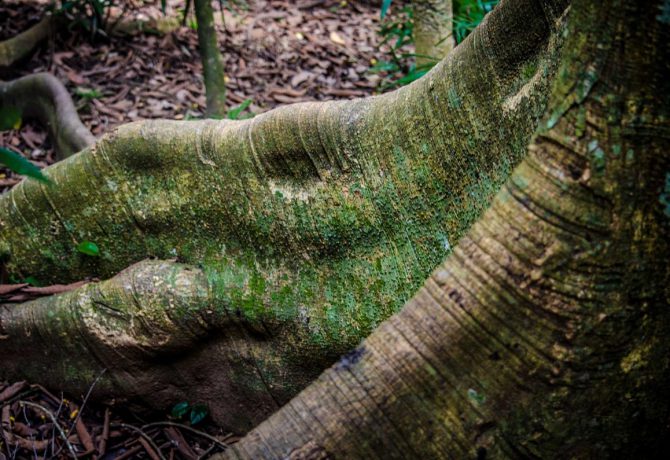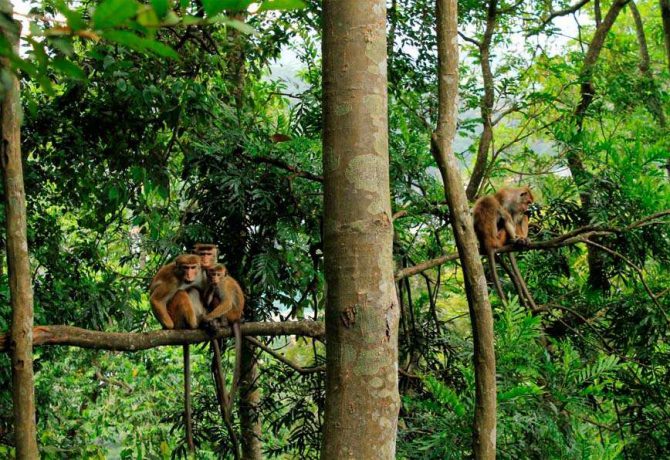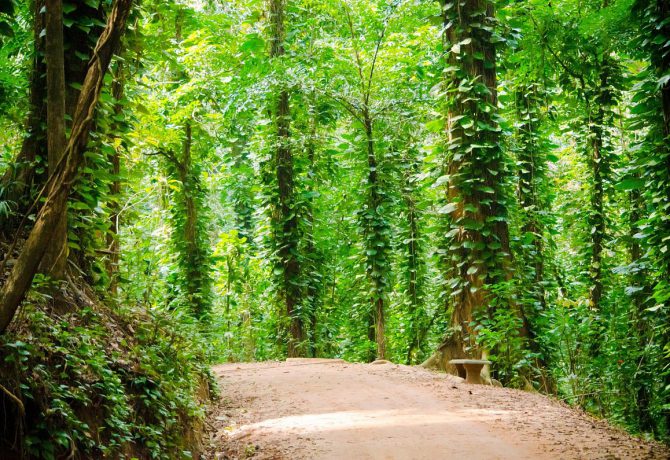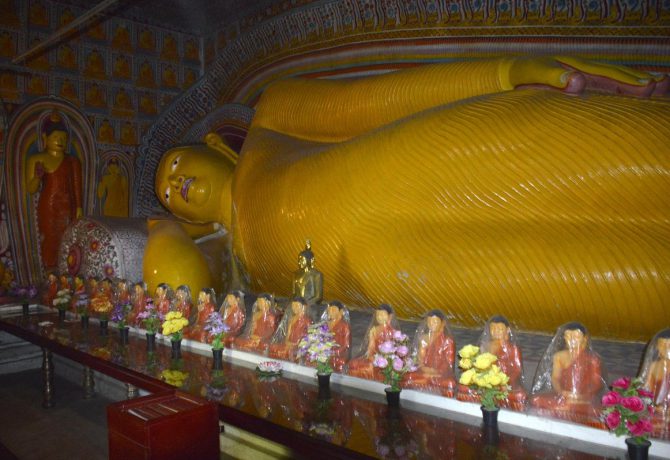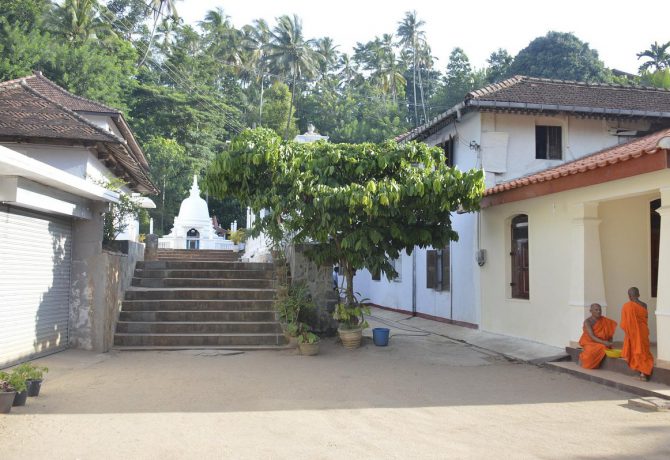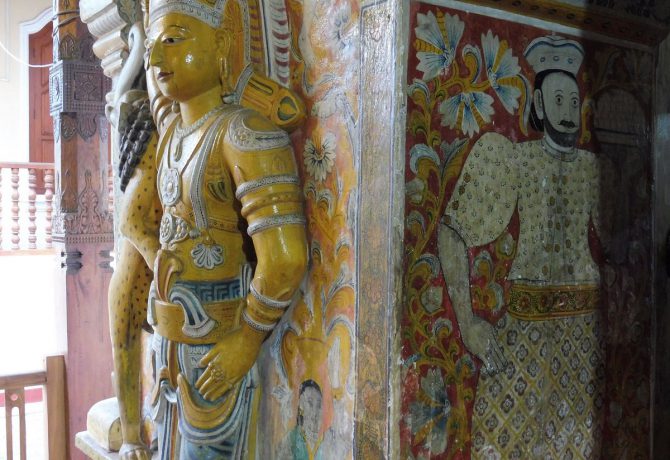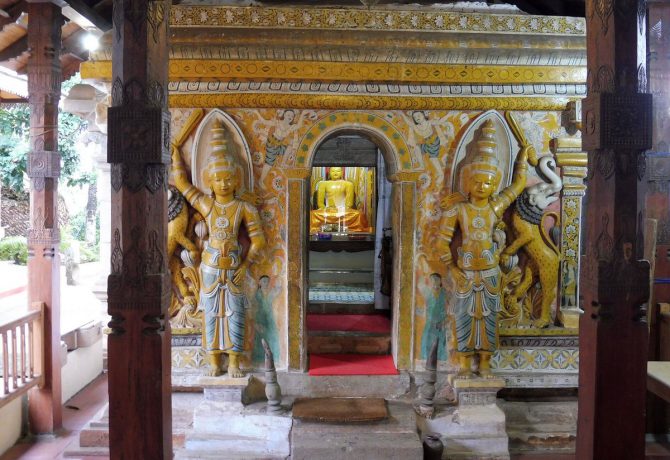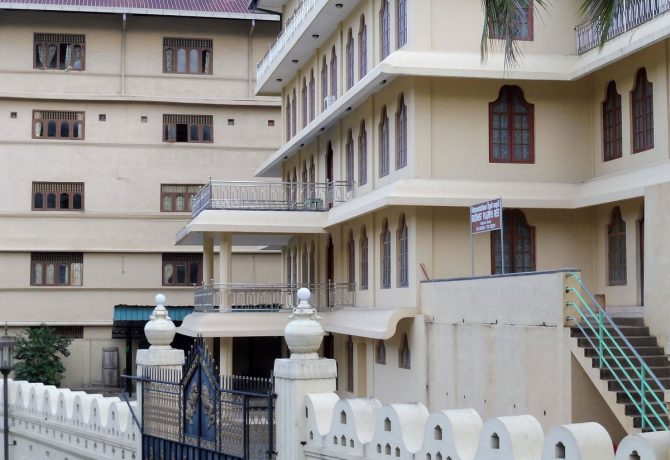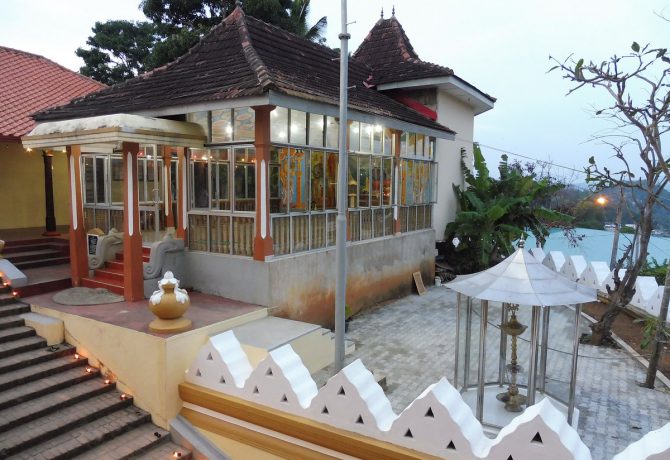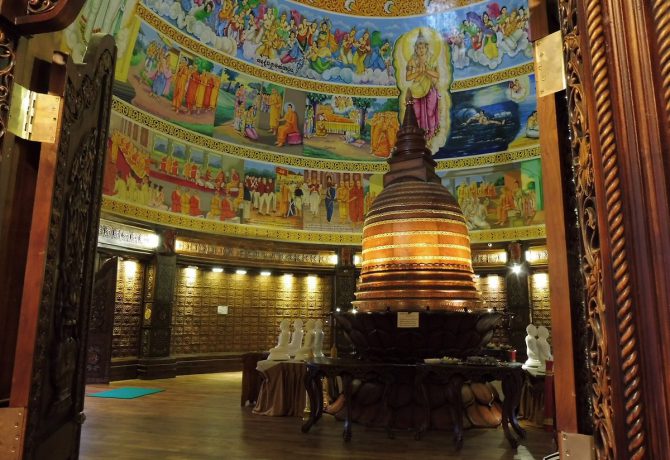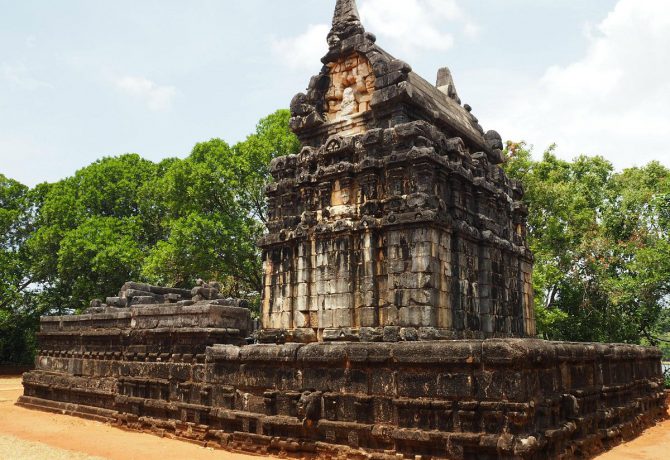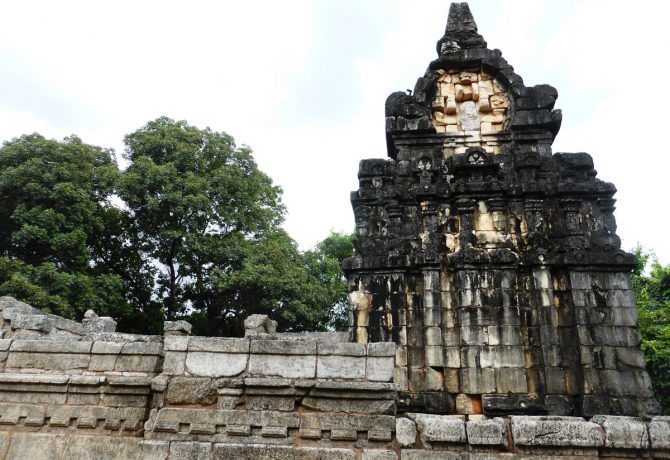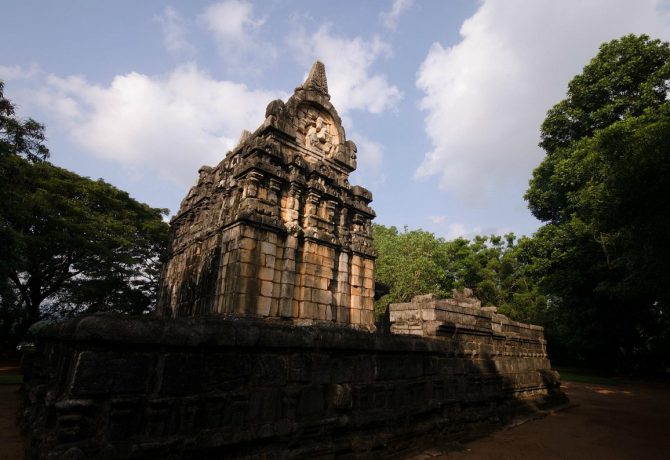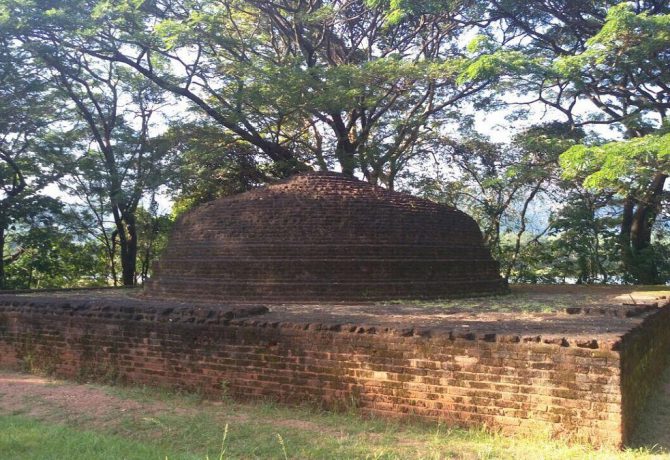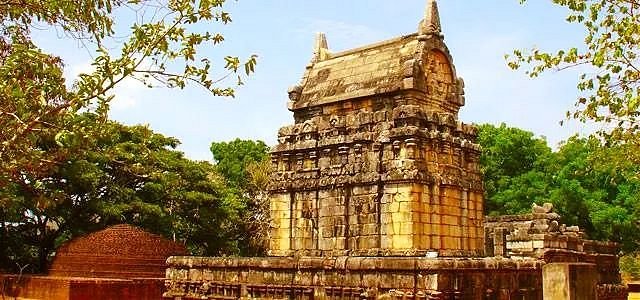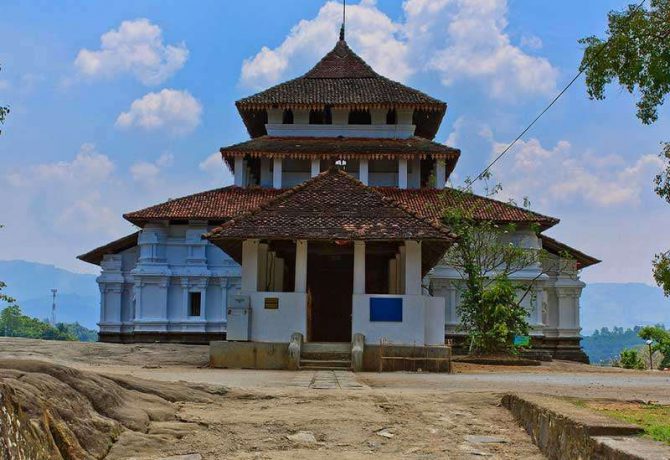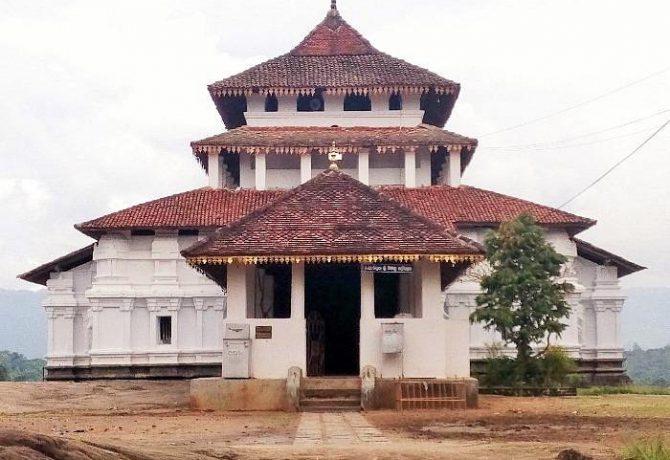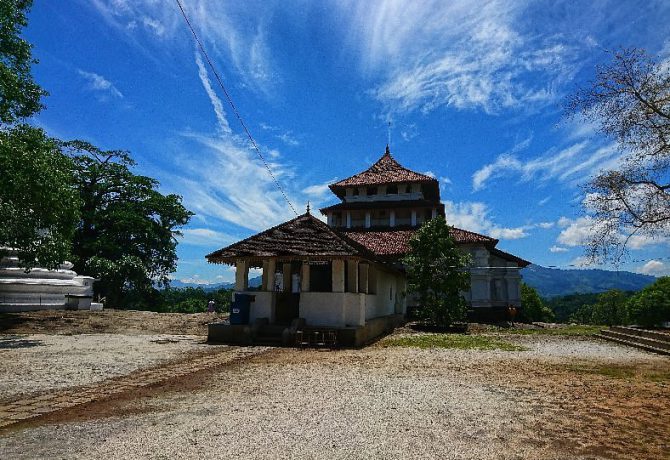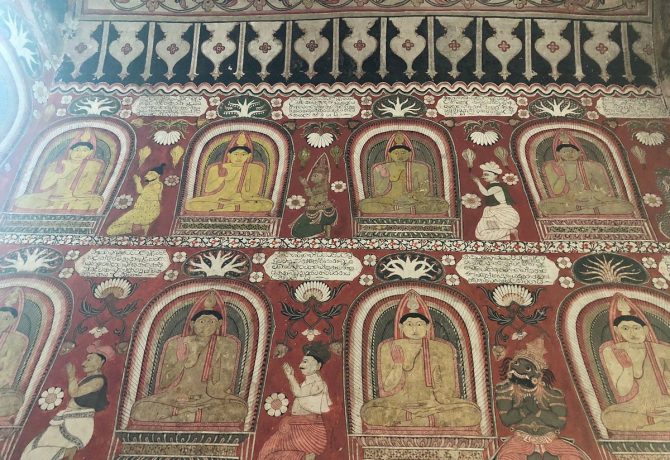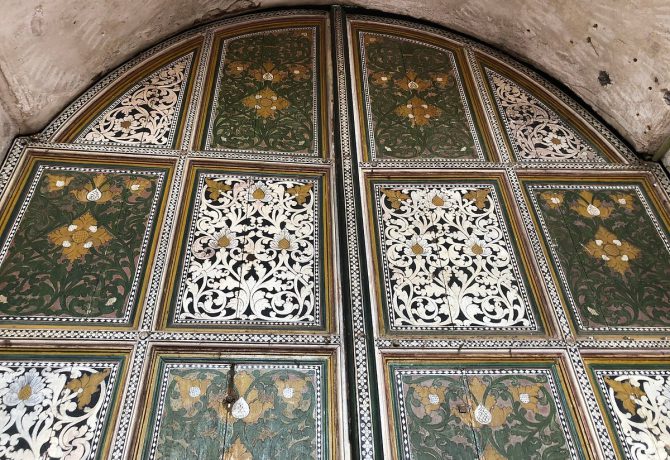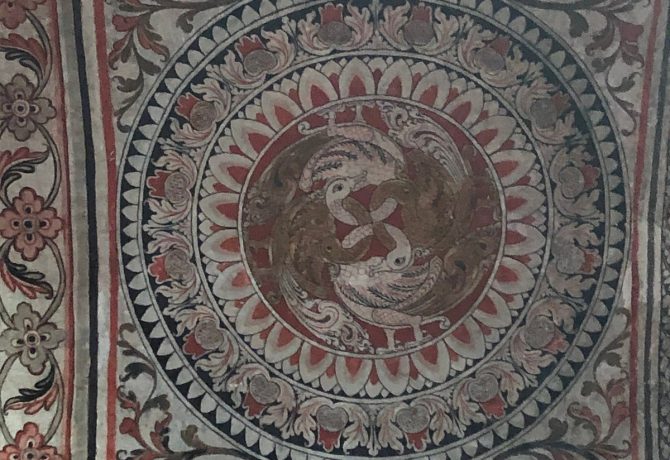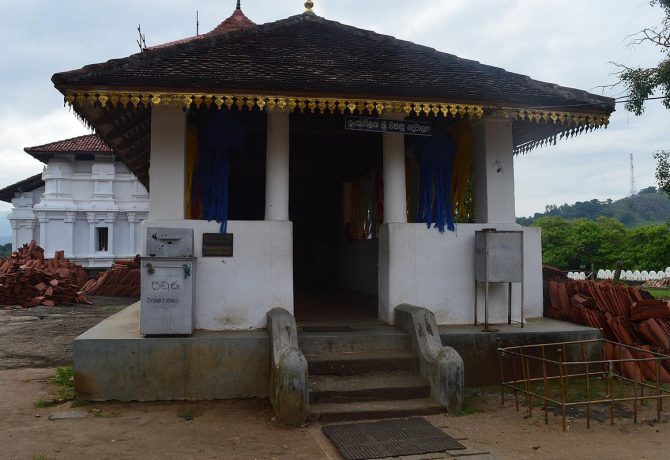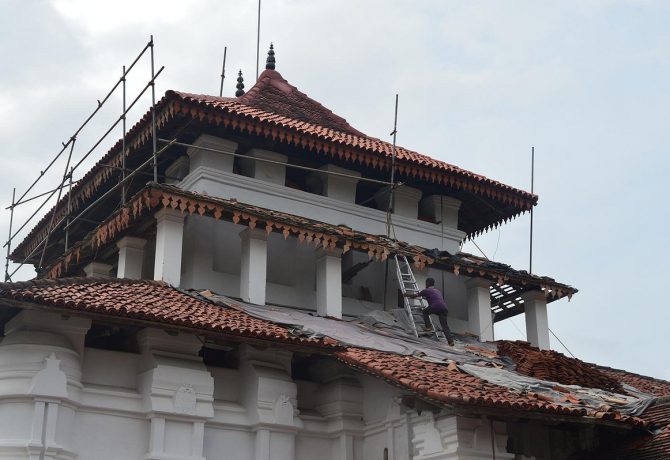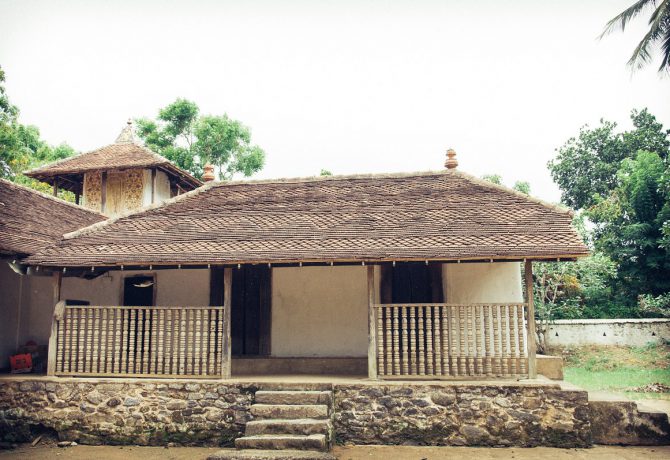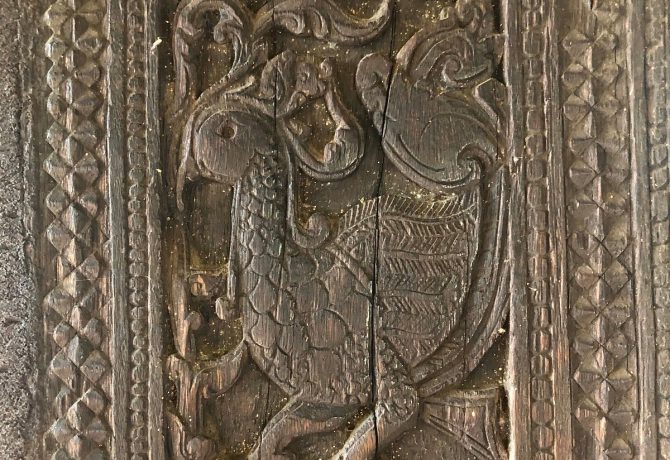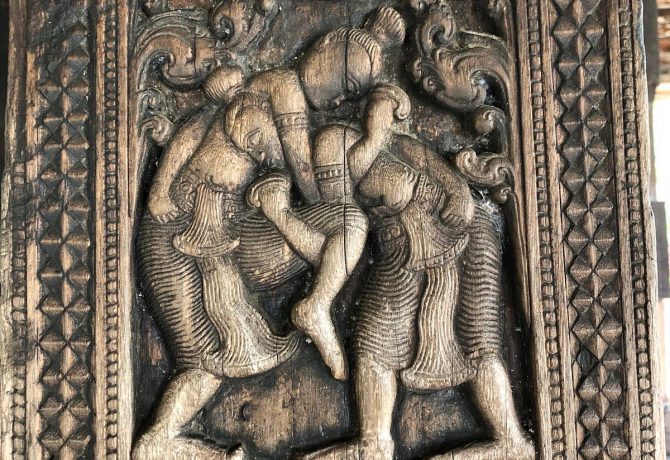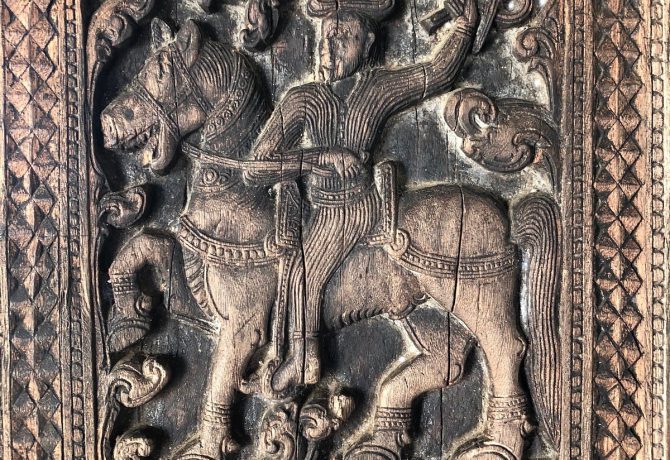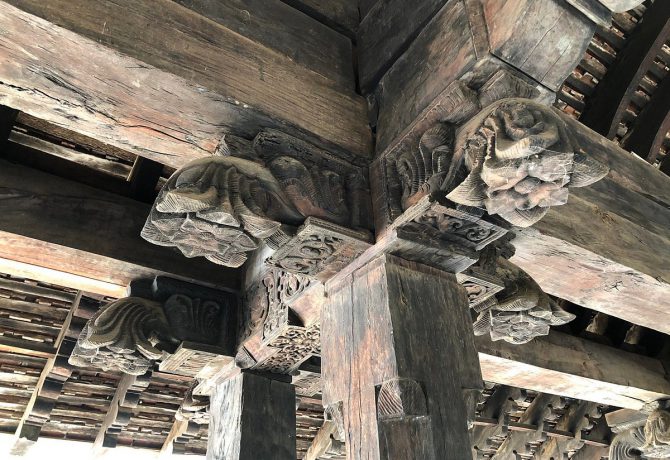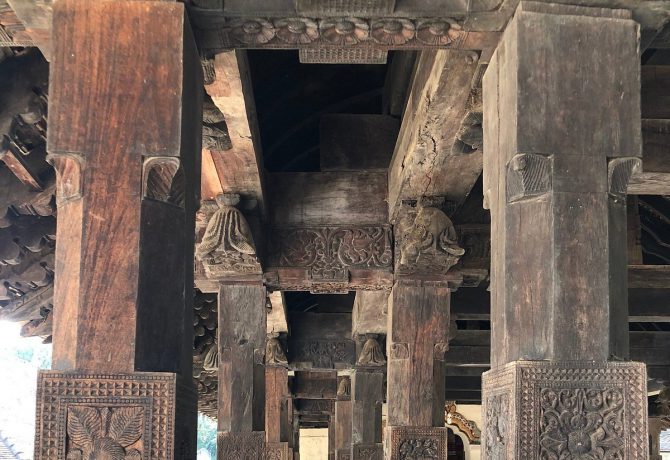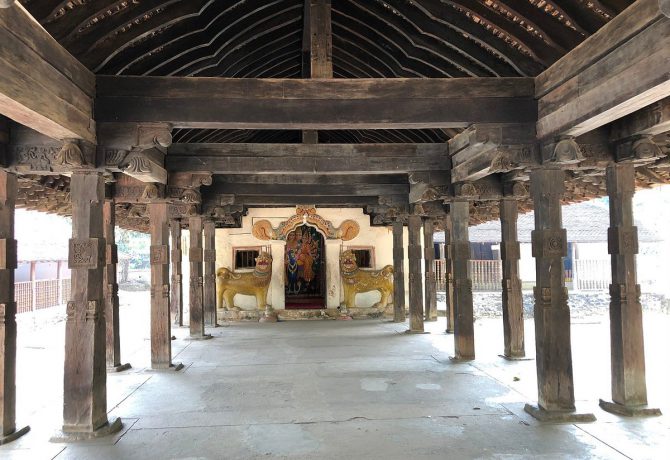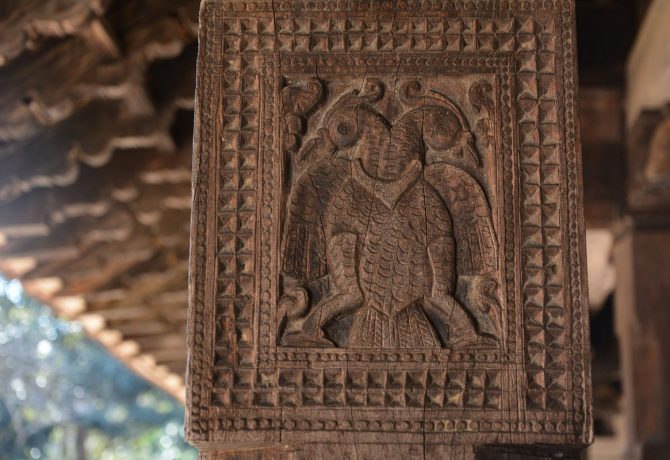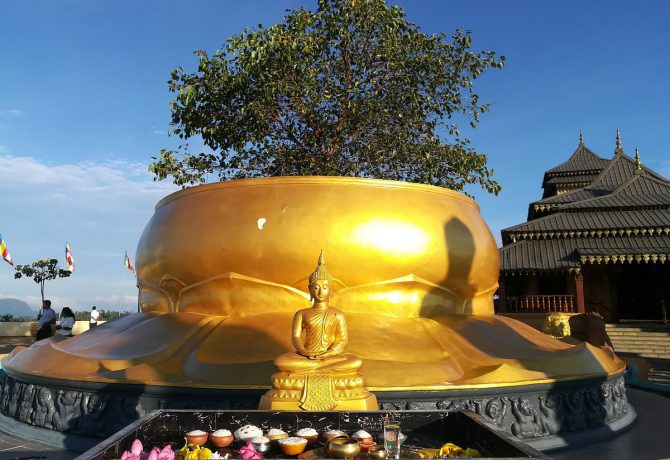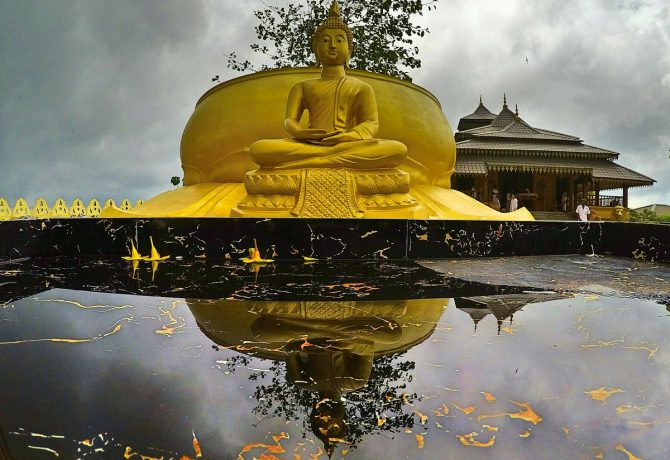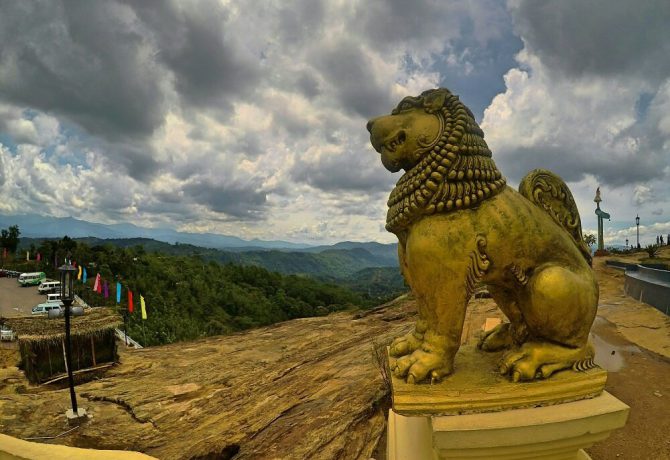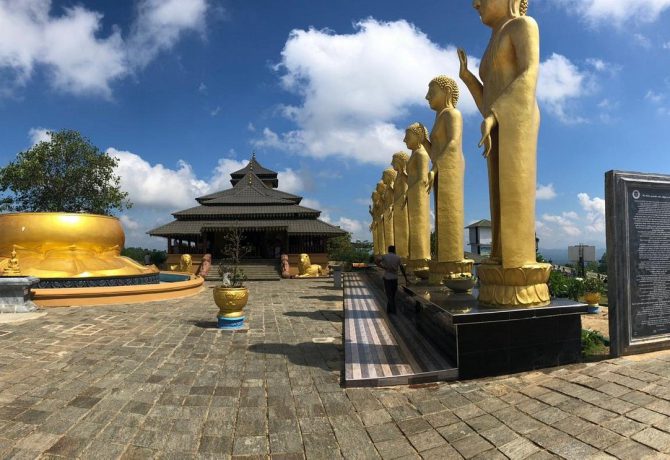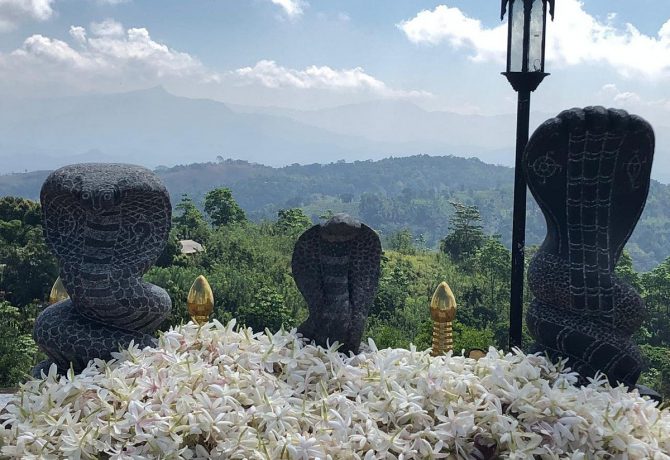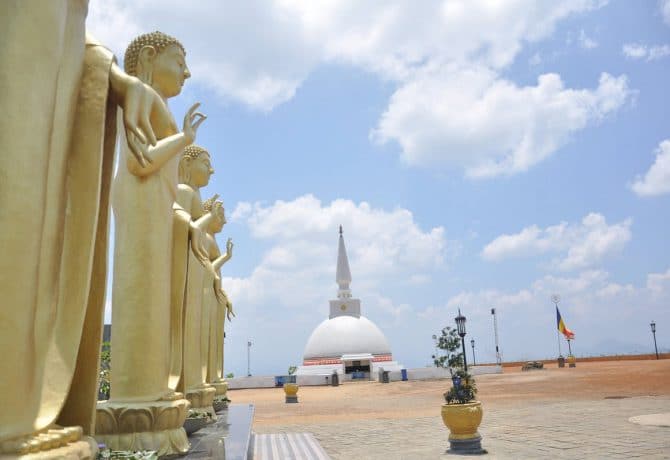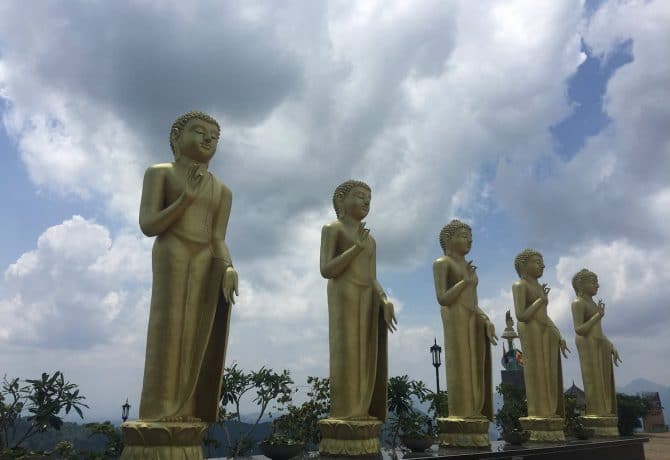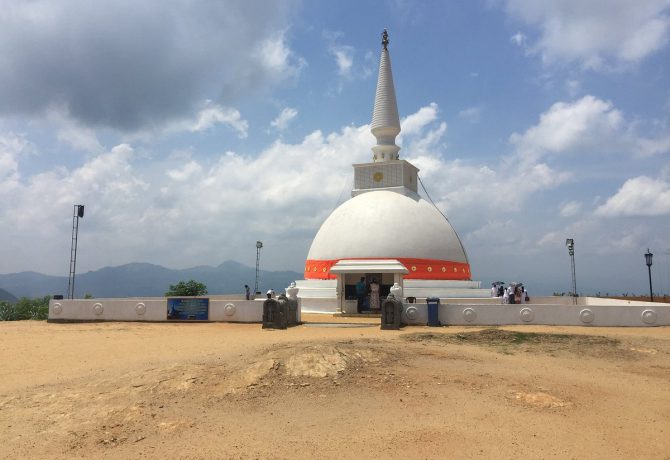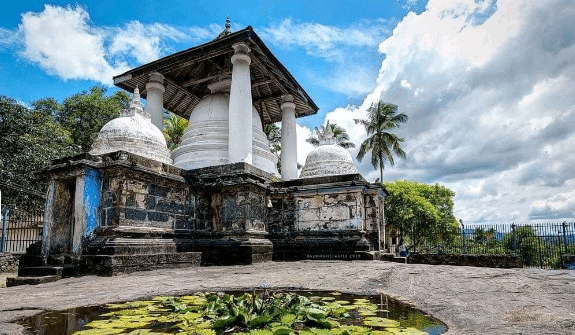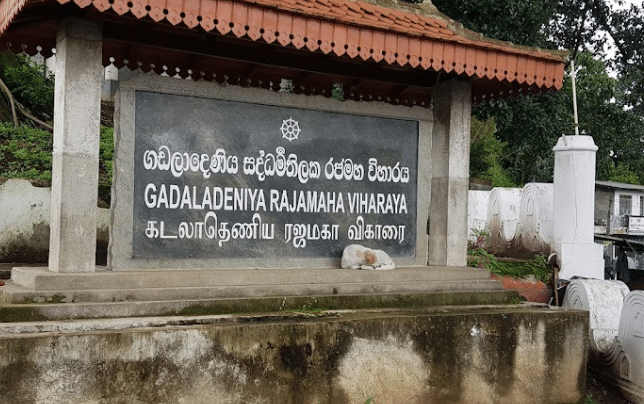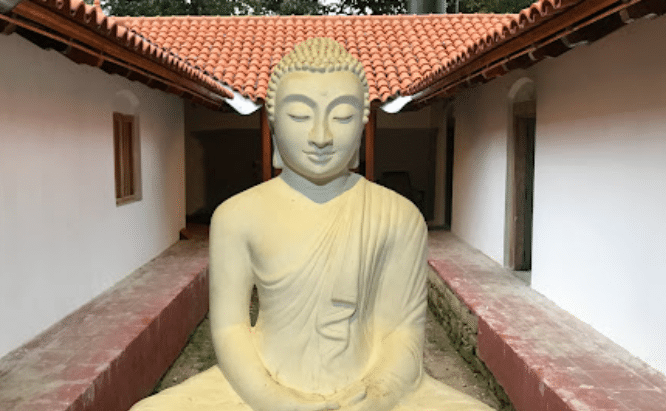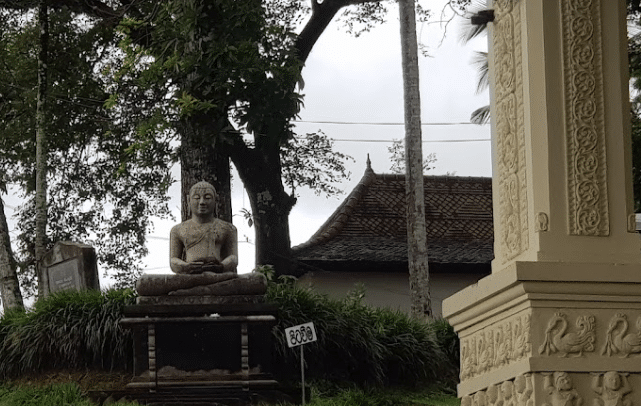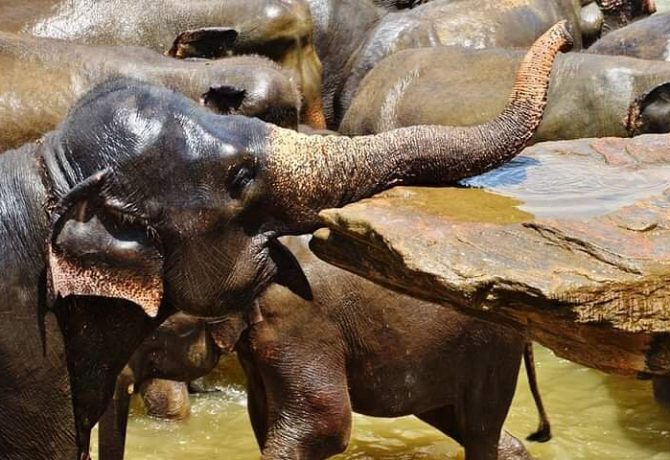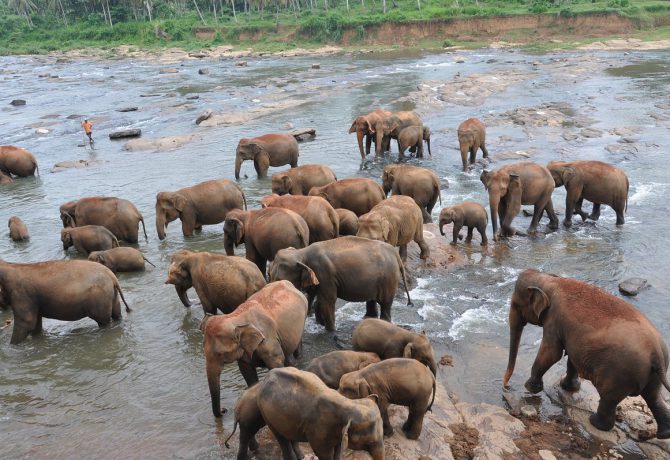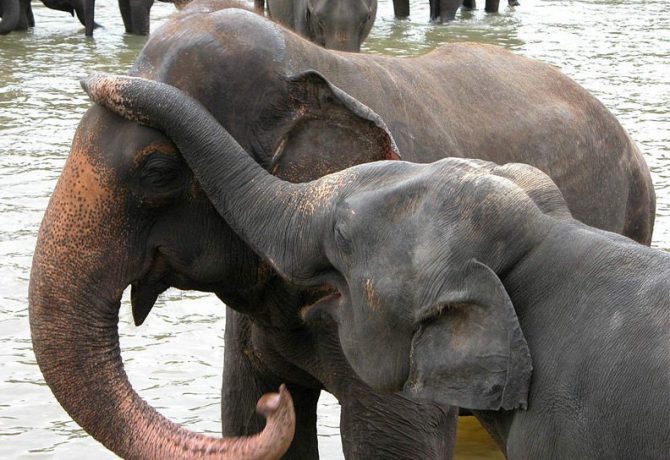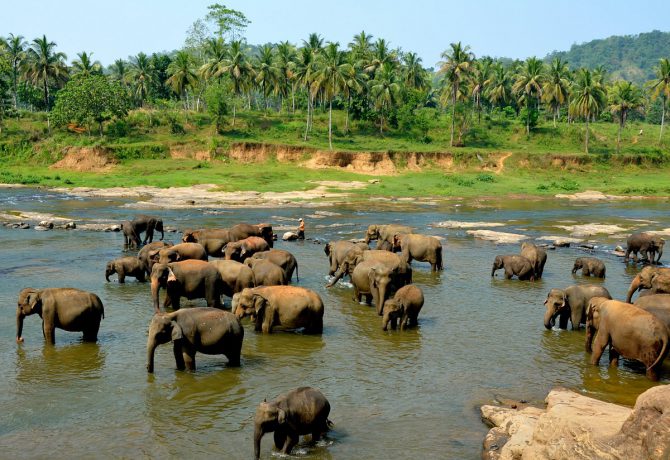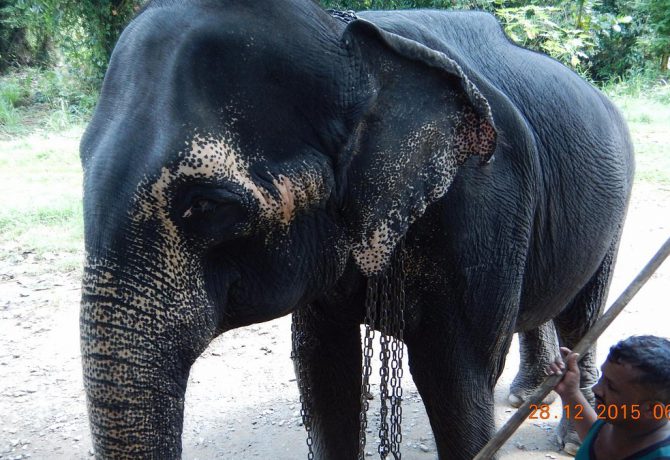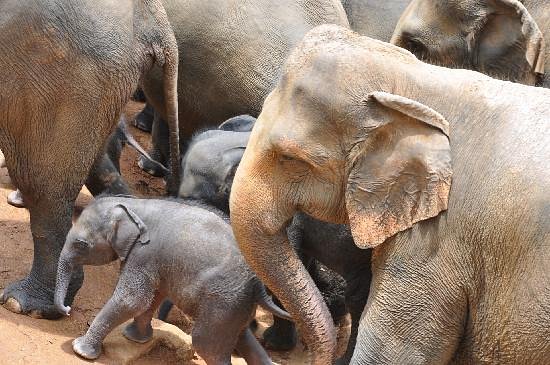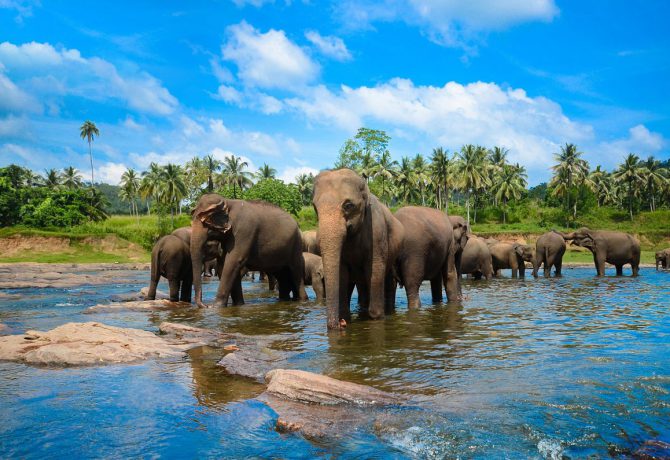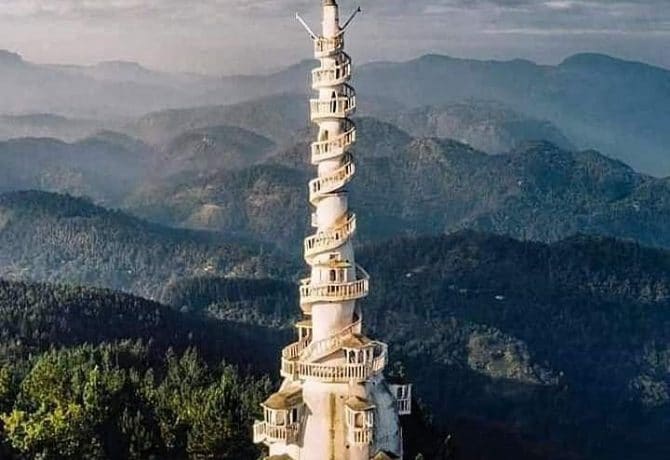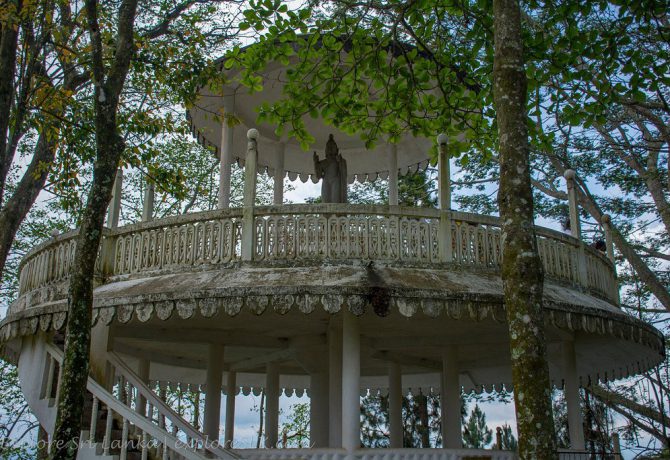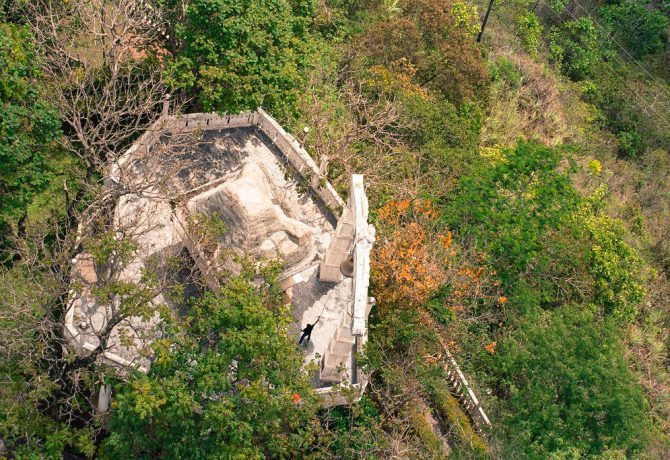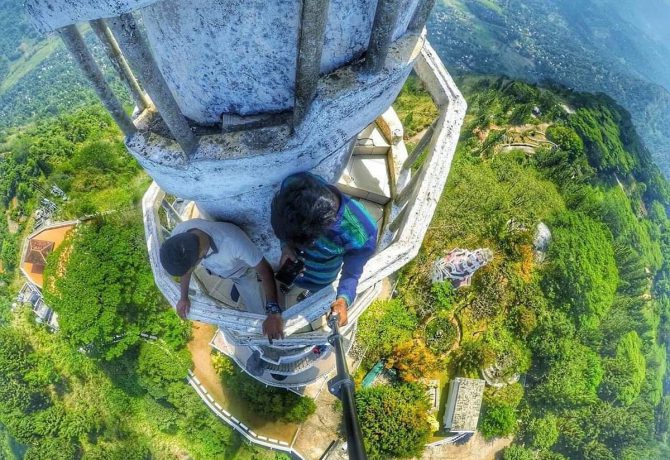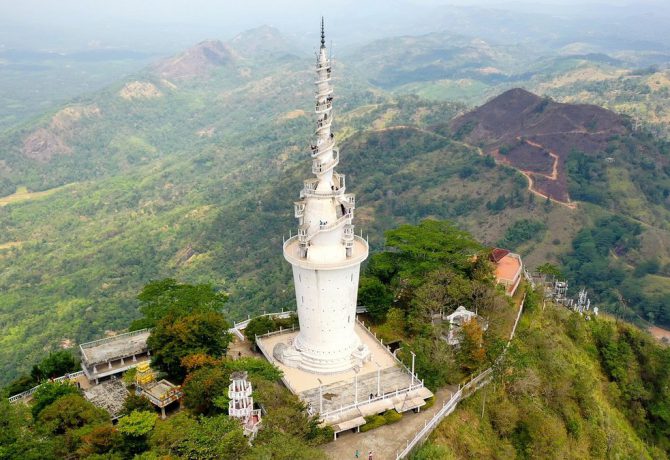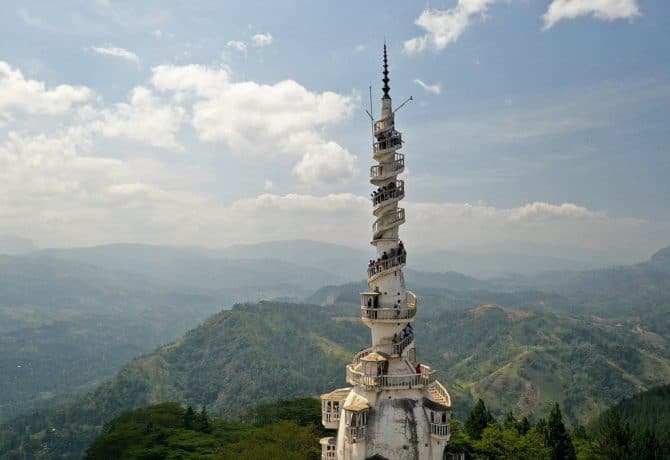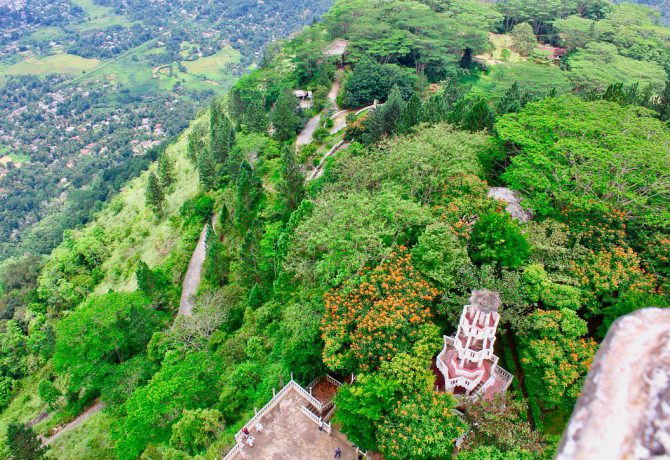Kandy is the administrative center of the Central Province, the medieval capital, an amazingly beautiful place and the second largest city in Sri Lanka. Kandy is in Tamil and means mountainous terrain. In the language of the Sinhalese, kandy’s largest ethnic community, the town is called Mahanuvara.
Kandy was probably founded in the fifteenth century by King Wickramabahu III as the capital of the then kingdom and named Senkadagalapura. Since then, a lot of water has flowed, and the lands of Kandy (both kingdoms and cities) have been trampled by different boots – Arabic, Portuguese, Dutch and, finally, British. Everything passes, the era of British Ceylon has passed: in 1972, the Sri Lankan Republic became independent. With her, Kandy became independent – now it is just a city, although one of the most popular in Sri Lanka.
The city is located in the heart of the island (that is, the ocean is far away, and lovers of a beach holiday need to understand this), at an altitude of about 500 meters above sea level. Around Kandy there are forests, tea plantations and mountains (Knuckles and Khantana). In the city limits is the Milk Sea (artificial lake Kiri Muhuda), and just a couple of kilometers to the south – the magnificent Udawattakele Reserve.
Kandy is one of the most important centers of Buddhism in the world. This is explained by the relic stored on its territory, and many memorable places, and countless temples in the vicinity. It is interesting to come to Kandy for a person interested in Eastern philosophy, looking for a Buddhist or a connoisseur of spiritual practices. Other tourists will also be interested, but the impressions will be blurred: compared to the same Thailand, Sri Lankan Buddhism is more intimate and modest.
About 120 thousand people live in the city with a suburb. During religious holidays (Esala Perahera), twice as many tourists and pilgrims come. The infrastructure for visitors to Kandy according to Sri Lankan standards is quite at the level: there are supermarkets, parking lots, a hospital, banks and exchanges, many restaurants and taverns, a huge market with national shoes / souvenirs / delicacies and shopping arcades with an unreal assortment of fruits and vegetables.
This is interesting: The industry of Kandy is aimed at the tourism industry. Small family manufactories produce unrealistically beautiful silk batik, tea companies collect souvenir sets, in jewelry you can buy silver and local gems. And if you walk around the market, you can fall into a coma from sweets, tropical fruits and the brilliance of suspiciously cheap gold.
- 1 Temple of the Tooth (Sri Dalada Maligawa)
- 2 Royal Palace (Old Kandy Royal Palace)
- 3 Sri Dalada Museum
- 4 Magul Maduwa / Audience Hall
- 5 International Buddhist Museum
- 6 Royal Bathhouse (Ulpange / Royal Bathhouse)
- 7 Kandy Lake (Bogambara Lake / Kiri Muhuda)
- 8 Kandy National Museum
- 9 Coffee Planters Fountain
- 10 Kandy Clock Tower
- 11 Temple with Buddha Bahirawa Kanda Buddha Statue
- 12 Hindu temples – four Devalayas (Maha Vishnu, Natha, Paththini, Khaali Devalaya)
- 13 Malvatu Maha Viharaya Temple and Monastery
- 14 Peradeniya Botanical Gardens (Peradeniya)
- 15 Udawattakele Sanctuary
- 16 Asgiriya Maha Viharaya Temple
- 17 Nalanda Gedige Temple
- 18 Lankatilaka Viharaya Temple
- 19 Embekka Devalaya (Embekka Devalaya / Embekke Temple)
- 20 Nelligala International Buddhist Center
- 21 Gadaladeniya Raja Maha Vihara
- 22 Pinnawala Elephant Nursery
- 23 Ambuluwawa Temple Complex
- 24 Attractions Kandy on map
Temple of the Tooth (Sri Dalada Maligawa)
The history of Sri Lanka’s most famous Buddhist temple , Sri Dalada Maligawa or the Temple of the Tooth of the Buddha – is shrouded in mystery, darkness and superstition. However, this is typical and almost no different from the history of any other temple in the world.
After Gautama Shakyamuni’s Mahaparinirvana, his body was cremated, but four molars remained unharmed. They were kept in India for a long time, but in the IV century the persecution of Buddhists began and they decided to take the relics to a safe place. The daughter of the reigning king, Princess Hemamali and her husband, Prince Dakhta, smuggled his tooth to Sri Lanka.
Hide and preserve the relic helped the reigning king of the island. It is believed that it was then that seven precious caskets were created for protection – they, like a nesting doll, are embedded in each other. In the smallest on the gold stand is the Tooth.
Since then, this has been the custom: the relic was preserved by kings, and the people were finally convinced that it symbolized power. Experts believe that it was because of the logical connection of Buddha’s Tooth = power that the temple was subjected to two powerful terrorist attacks: in 1989, Janatha Vimukti Peramun (People’s Liberation Front) blew up the gates, and in 1998, the Tamil Liberation Tigers of Tamil Eelam tried to blow up the temple itself. According to the official version, Zub was not injured.
What to see:
- In July-August (depending on the phases of the moon, each year there are different dates) there is a beautiful religious festival of Esala Perahera. For five days, caskets with a Tooth are carried around the city on the backs of dressed up elephants, and crowds of believers rejoice, burn torches and eat delicious things. The festival shows national dances, tricks with fire and performances of drummers.
- Every Wednesday, the tooth is washed with a special herbal infusion, this is a very spectacular ritual (Saffaron). Then the water is distributed to all those present.
- Three times a day, monks in the temple light candles and pray. Anyone can attend.
You can’t come to Kandy and not meet the Tooth of the Buddha. Even if you do not go to the temple specifically, the Tooth will overtake the tired traveler somewhere on the cobbled streets of the city or in the British squares. The main Buddhist shrine of the island (by the way, not only the islands, Zub is generally an important part of Buddhism) attracts thousands of pilgrims on any day of the year, and not only to the famous festival.
The temple is open full daylight (from dawn to dusk). To enter, both men and women need to comply with the dress code, cover the shoulders and knees. Entrance fee, they are also asked to leave a donation.
Website: https://sridaladamaligawa.lk/
Royal Palace (Old Kandy Royal Palace)
The Royal Palace of the Kandy dynasty (Raja Vasala) is located a little to the north of the Temple of the Tooth of the Buddha (actually, the Temple is part of the palace). Now in the palace there are courts and the Department of Archaeology (here they receive permits for any more or less significant historical research).
The rulers of the kingdom lived in the palace until 1815 and the building itself is only part of a large but relatively modest royal dwelling, which included a meeting hall, and baths, and a harem, and the residence of the queen.
The palace is a long plastered building with a central entrance and a vestibule lined with terracotta tiles. Do not expect miracles from him: the kings did not live poorly, but restrained. Moreover, the palace for a short history of existence was repeatedly turned into dust and ashes, and even trampled into the red Sri Lankan land.
Rather, the whole territory is of interest – the forest, paths, monuments to national heroes and legendary personalities. It is interesting to listen to the legend of Maha Maluv: astrologers advised the first king to put the capital where he would see a white mongoose. Therefore, the royal residence appeared on the site of the old gumn – the site where grain was threshed.
Importantly:
- you need to wear something closed, the local aggressive fauna is frantically gnawing on your feet (you can walk along the paths in shoes);
- repellent is mandatory, here in any season there are many flying buzzing blood-sucking insects;
- monkey thieves run around the territory;
- in the rainy season you have to walk on frank mud.
The entrance to the palace grounds is through the Temple. Inside, you need to be attentive to the offer of various services: for example, it is not necessary to hand over shoes, you can carry it with you in a bag. Most of the guides are local tipper storytellers who tell stories that have nothing to do with the kandy royal dynasty.
Website: https://sridaladamaligawa.lk/
Sri Dalada Museum
The museum is located in the building of the royal palace on the first and second floor. Most of all, the Sri Dalada Museum resembles a luxurious local history museum – both in mood and in the organization of the exposition. It is necessary to visit it to understand how popular this place is.
In two halls there are gifts, artifacts and documentation:
- historical records, lists of prelates and all kings with families;
- royal clothes, household items;
- gifts to the Temple from the kings of the local dynasty and other Buddhist countries (for example, Thailand);
- ancient caskets, statues, jewelry;
- archaeological finds from all over Sri Lanka;
- Buddhist relics (painted imprint of the Buddha’s foot).
You do not need to pay for the entrance separately, the amount is included in the total fee at the entrance to the complex.
Working hours: daily, except Friday, 7.30 to 18.00.
The building is quite stuffy, so it is better to plan the trip for the early morning.
Website: https://sridaladamaligawa.lk/
Magul Maduwa / Audience Hall
The place where the Candian Convention was signed – the document that destroyed the last kingdom in Ceylon and enslaved the Sri Lankans for more than 150 years – must be seen, if only because history was made here. Complex and tragic, costing the island hundreds of thousands of lives and a civilizational turn.
The Hall for Public Audiences (de facto Assembly Hall) Of Magul Maduva was built under the last King, Sri Vikram Rajasinha. The hall was used during religious holidays (here in the XVIII century the Tooth was exhibited), on its territory the king met with ambassadors, accepted gifts from other countries, heard diplomats. With the beginning of British rule, the Hall became a seat for representatives of the colonial administration.
Initially, it was planned to build the Hall from precious wood, encrust with ivory, gems and decorate with carvings. Later, the British found there little authentic luxury, they completed an additional hall (the Prince of Wales was received there), and the magnificent carved columns were replaced by brick pillars.
The meeting hall can be viewed during daylight hours, it works according to the regime of the Temple. The ticket is included in the price of entry to the territory.
Website: https://sridaladamaligawa.lk/
International Buddhist Museum
In 2010 we started, and in 2015 we completed it: the International Museum of Buddhism in Kandy is a new interesting place that shows the geography of the spread of this religion in the world. The Museum has 17 halls – according to the number of countries in which Buddhism is one of the dominant religions. In Kandy, the hall of China was first opened, then – Japan.
Of particular interest is the building in which the museum is located: this is Kandy Kacceri, the main secretariat of the city, built under the British. Previously, there was a judicial department here, but in honor of the friendship of all Buddhists of the world, it was decided to evict it.
The museum is located on the territory of the temple complex very close to the Temple of the Tooth. Open only on weekdays from 9.00 to 17.00. Entrance fee, no dress code required.
Website: https://www.facebook.com/worldbuddhistmuseum/
Royal Bathhouse (Ulpange / Royal Bathhouse)
A significant part of the palace complex – the royal baths – was built at the very beginning of the XIX century by the last king Sri Vikram Rajasingh shortly before the complete surrender to the British. The baths were used by numerous wives and concubines of the reigning king.
The baths are two connected pavilions that are some distance from the palace: one next to the Temple, the second almost on the water to give bathers access to the lake.
The British added a floor to the baths, made attics and additional entrances. Nowadays, there is a police station in the buildings, but the municipal authorities are going to move the guards somewhere else in the near future, and open the historical rarity to tourists.
Kandy Lake (Bogambara Lake / Kiri Muhuda)
For the beautiful artificial Lake Kandy (also Bogambara, Silent or Kiri Muhunda), we should all thank the last king of Kandy. Instead of dealing with the economy and fighting the British colonialists, the libertine and sweet-lover Sri Vikram Rajasingh engaged in harem and architecture. He ordered to dig a lake (small, only 19 hectares in area), and in its center to pour an island. There was the main building of the harem, and, according to rumors, an underwater tunnel led to it.
The British did not touch the lake, and on an artificial island they set up a warehouse with ammunition. With the advent of the republic, fishing in the lake and cutting down trees on the shore were banned, and the reservoir was given the status of sacred. For several decades, the biosystem has been restored in Kandy, many birds, amphibians, small rodents, reptiles live here. Some of them are rare.
The lake is located in the heart of the city. You can approach Kandy Lake for free at any time of the day or night (it is better not to have night, because in Kandy crime is at the level of Colombo). The area is ennobled, there are benches, paths, kiosks with lemonade, fruits and suspicious ice cream.
Kandy National Museum
The main secular museum of Kandy is located on the territory of the temple complex in the building of the Summer Palace (this is a euphemism for the name of the part of the harem in which disenfranchised concubines lived).
The museum was opened to the public in 1942, before that the building served as a repository of works by artists from the local Art Association and goods of Matale artisans. The exposition includes mainly symbols of royal power and dynastic things – thrones, regalia, throne clothes, ceremonial weapons, scepters. A separate hall is dedicated to the Sri Lankan art of war, weapons, armor.
In a small hall there is an impressive collection of jewelry – royal, gift and, apparently, taken from concubines.
Attention:
- entrance fee 600 rupees;
- there is no toilet in the museum;
- air conditioners do not work;
- it is forbidden to take photos and videos.
The museum is small – only 5 thousand exhibits, you can get around in an hour. Excursions are conducted in English, but the exhibits are signed, you can see everything yourself.
Page on the state museum portal: http://www.museum.gov.lk/
Coffee Planters Fountain
They say that after all the events with the American continents, British planters were most bored with coffee. The economy abhors a supply vacuum with potentially huge demand: in order to finally sever trade ties with vile rebels (this is about the United States), the British decided to grow coffee in the colonies. The first to fall under the experiment was Sri Lanka (then Ceylon) with a mild humid climate and a hardworking population: by the 1870s, the area of coffee plantations had stepped over a hundred thousand hectares.
Tea would only come later, but in the nineteenth century, the world enjoyed Ceylon coffee, and in Kandy, coffee kings flourished, comparable in wealth and connections to metallurgists and industrialists.
In 1873, the heir to the throne, the Prince of Wales (the future King Edward VII), arrived in Ceylon on a traditional visit. The visit of the monarch became the main secular event of the century in the sleepy towns of Sri Lanka: it was prepared for several years, and then a couple of decades discussed.
Overwhelmed with delight, coffee planters threw money and ordered a fancy fountain in Glasgow: its bowl is made in the shape of a coffee flower, and water is poured by naked cupids. The Prince of Wales did not consider it necessary to visit the fountain, but a bronze tablet with a loyal text was nailed to it anyway.
It is definitely worth visiting the fountain: firstly, it is really beautiful. Secondly, it was not rebuilt, it was preserved in its original form without edits by local pundits. Thirdly, on holidays it is filled with water, children, monkeys and tourists splash in it. During the festive processions, ceremonial elephants come to the fountain. True, with a prosaic goal – to get drunk.
Address: Intersection of Temple Street and Deva Veediya.
Mode of operation – around the clock, you can see for free.
Kandy Clock Tower
In tourist cities, any building is covered with a haze of legends, but not all of them are kind and with a happy ending. For example, the Ismail Memorial Tower (or, as they like to call it in tourist almanacs, the Kandy Clock Tower) was built by an inconsolable father in memory of his dead son.
In 1947, the heir of the main dealer of the British car industry in Ceylon, Haji Mohamed Ismail, died during a rockfall on the Kandy-Colombo road. To come to terms with the bitterness of the loss, the father bought the place, paid for the project and the construction of a small stone tower in a purely Kandyan style.
Address: City centre, the intersection of Sri Dalada Vidiya, Bandaranaike Mavata and Hiragedar Mavata. You can not go inside, tourists prefer to take a selfie against the background of the building.
Temple with Buddha Bahirawa Kanda Buddha Statue
A giant (almost 27 meters!) snow-white statue against the background of the blue sky during the day and slightly illuminated milky against the background of a dark one at night: Buddha Bakhirava is located on a high hill, so it can be seen from almost any corner of Kandy. Traditionally, steps lead to the statue: they symbolize the ascent of the righteous to the ideas of the deity. If you climb up, an impressive view of the city opens from a tiny observation deck.
The temple of Buddha Bahirava Kanda is relatively new, it was built in the XX century on the site of the former Hindu Devalaya, dedicated to evil mountain spirits (in fact, Bahirava Kanda means “dwelling place of mountain spirits”).
Importantly:
- entrance only in daylight hours, price 250-300 rupees;
- there is no toilet on the mountain, under the mountain there is a traditional Sri Lankan public;
- it is better to take shoes with you;
- it’s dirty at the top, it’s better to stock up on socks.
The temple is located 2 km from the center in the historical part of the city. It is better for subtle natures to look at the statue from afar: up close, it, like other monumental creations, looks less impressive.
Hindu temples – four Devalayas (Maha Vishnu, Natha, Paththini, Khaali Devalaya)
They don’t like to talk about it, but the history of Sri Lanka is the story of the battle between Hinduism and Buddhism. And, despite the tendency of both religions to flow together and borrow rituals, gods and relics from each other, they are at war. Sometimes the war gets hotter, and then hooligans with sticks and extremists with bombs take to the streets, but mostly it proceeds in a slow, lazy mode.
The fact that Buddhism and Hinduism would not reconcile was clear to the ancient kings. Therefore, they supported the mixing of teachings, united temples, made additions to folk legends. So it turned out that the Temple of the Tooth of the Buddha was built on the territory of an older Hindu complex: its remains can be seen now. Part of the rituals of worship of the Buddhist shrine includes Hindu temples.
Four small temples were built in different periods, the oldest are the Devalaya Nathi and Kali (almost destroyed). Close to the temple of Kadi is Devalaya Pattini – a modest goddess of the Hindu pantheon, who sent whooping cough, chickenpox and polio to children.
Devalaya Vishnu, the newest, dates back to the XVIII century, when rulers tried to integrate the guardian of the universe with Buddhism.
Visiting Hindu Devalai is free and available around the clock.
Malvatu Maha Viharaya Temple and Monastery
One of the most beautiful Kandyan Buddhist monasteries is a small building from the time of King Senasammat Wickramabahu on the southern shore of Milk Lake. The complex includes several temples dedicated to different stages of the Buddha’s enlightenment and hides in the forest, so you can see the buildings only up close.
The monastery of Malvatu Maha Viharaya is active, monks of one of the endless currents of Buddhism live here. Nevertheless, they are happy to meet tourists, they do not ask for money, but they will be happy to receive donations.
Address: Saranankara Mawatha Street, Kandy.
Surroundings
Around Kandy there are many beautiful places – both man-made and natural. Independent tourists can be offered to find a tour desk on the main street of the city and sign up for all available routes. This is much more interesting than endlessly bypassing the same temples within the city.
Peradeniya Botanical Gardens (Peradeniya)
4 km from Kandy is the largest botanic garden in Sri Lanka. It wears the prefix “Royal” not at all because it is related to Britain, just the opposite: the laying of the first trees was made by the kings of Kandy, and the British colonialists only cut down a significant part of the collection.
Now the botanical garden covers an area of about 67 hectares and boasts one of the most significant collections of flora in the world: 45 thousand species of plants plus historically significant plants (ficus of King Edward VII, ironwood of Nicholas II and spruce of Yuri Gagarin). The pride of Peradeniya is the National Herbarium, which includes hundreds of orchids, medicinal herbs, spices.
Importantly:
- the park is divided into parts (thematic gardens), so as not to get lost, at the entrance you need to buy a route brochure;
- you do not need to expect to see everything in a couple of hours, it is unrealistic – you will need at least a day;
- on the territory there are expensive and suspicious cafes, but it is not forbidden to bring food and drinks with you (although you can not have picnics);
- smoking is prohibited in the park;
- entrance fee 1500 rupees;
- can not do without repellents;
- it is desirable to cover the arms, neck, legs not for religious, but for defensive reasons;
- it is better to read information from the site, local guides do not speak English well.
Website: https://www.botanicgardens.gov.lk
On the territory of the park 200 days a year it rains, so the option that a tropical downpour will run in the middle of the walk is quite real. You need to choose comfortable shoes.
Udawattakele Sanctuary
The Royal Forest Park is located just behind the famous Temple of the Tooth of the Buddha. It was considered a sacred place until the times of British Ceylon, it was forbidden to cut down trees and even collect flowers. The British significantly thinned the protected forest, so its restoration became for all Sri Lankans an element of the struggle for independence and the restoration of national identity. In addition, the forest has religious significance.
It is important to know:
- for walks it is necessary to choose closed shoes;
- entrance fee 700-800 rupees;
- smoking is not allowed on the territory;
- it is forbidden to feed animals and birds.
Be sure to see the hermitages, a natural cave and climb the peak of Kodimal. Fans of ethno-Gothic can go to Harrison Cemetery.
Asgiriya Maha Viharaya Temple
The residence of the head of the monastic community that keeps the Tooth of the Buddha is located in Asgiriya (a suburb of Kandy). The building of the temple began to be built at the beginning of the XIV century, finished in the XIX: the resulting complex hodgepodge may be of interest to a specialist architect, historian or enthusiastic Buddhist. Inside the old temple there is a seated Buddha (the first enlightenment), inside the new temple there is a statue of the reclining Buddha, in closed vaults the documents of the royal dynasties are preserved.
Since 2010, access to the Asgiri Maha Viharaya temple complex has been difficult, but tourists are allowed into the town itself. Be sure to undress and cover your shoulders. On the territory you can mingle with friendly monks.
Address: Gampaha, Sri Lanka
Nalanda Gedige Temple
The ancient temple near Matale for a long time in the VIII century was considered the center of Sri Lanka. It is designed according to typical Hindu canons, boasts a statue of the ugly god Witteshwara, but, if you believe the documents, already in the IX century Buddhists held services here. This gives experts a reason to call the temple a symbiosis of cultures and religious traditions.
Now the temple does not work and is in a neglected state, but it is worth seeing it for general development. You need to get to the temple by taxi or with an organized excursion, it is located just a kilometer from the A9.
Lankatilaka Viharaya Temple
A small (80 m) working temple of Lankatilaka Viharaya is located in the town of Hiripitia, 15 km from the center of Kandy. It is interesting as an unclouded example of Sinhalese architecture.
On the territory of the complex there is a young Bodhi tree, three Buddhas and five statues of Hindu deities-develai, including Bandara.
Address: Daulagala, Sri Lanka
Embekka Devalaya (Embekka Devalaya / Embekke Temple)
15 kilometers from Kandy there is a place that, according to the spiritual principle and the power of influence, will give shape to grandiose, but rather primitive Buddhist shrines. The medieval Hindu temple of Embekka Devalaya was built by King Wickramabahu III and served as a place of worship for the protecting deity Bandara.
The temple was created according to the traditional project: the hall of statues, the hall of rituals (dance hall) and the drum hall. In the last two centuries, various ceremonies have been held – not only religious, but also secular with the participation of high-ranking officials, even the king.
Ritual halls are richly and festively decorated with carvings: magnificent, subtle work, complex storylines, plasticity and fantasy of the relief – it is estimated that columns, walls and doors are decorated with more than 500 unique, non-repeating drawings.
The structure itself is distinguished by amazing engineering finds: the octagonal shape of wooden columns by transformations to the ceiling passes into a square, and the tiled roof is fastened by a common mechanism (Madol Kurupava). In Sri Lanka, there are no analogues of such fixation.
Importantly:
- inside the temple smells of spicy wood, this can be a problem for allergy sufferers;
- there are traditionally no toilets;
- the territory is dirty, there are many traces of animal life;
- it is better to take water and a lot of wet wipes with you.
Address: Embekka Pilimatalawa Road
Nelligala International Buddhist Center
A very new (but in some places already slightly peeling) Nelligala is not a temple, but a cultural center. Of course, the status will not prevent Buddhist believers from praying to any Buddha statue, but the fact remains that there is nothing religious in the Buddhist center opened in 2015. It’s more of a museum. And, nevertheless, annoying guides will still ask you to take off your shoes and observe the dress code: without hats, covered shoulders and knees.
A curious tourist at the entrance to the center is met with a lot of gold – not real, of course. Gold paint is covered with everything here: tall Buddhas, Sinhala lions, swans, a bowl for a young bodhi tree and so, in small things – fences, handles, bowls with growing flowers. There are a lot of intoxicating smelling flowers and lotuses everywhere. There are no monkeys. Admission is free, but it is better to plan a visit on a weekday early in the morning, so as not to fry yourself in the sun and face admiring Buddhists.
Address: Nelligala Rd, Sri Lanka
Gadaladeniya Raja Maha Vihara
One of the main attractions of Kandy is not in Kandy, but in the suburbs, in Pilimathalava, at a distance of 10 km. The memorable rock temple was built in the XIV century under the auspices of King Bhuvanekabahu IV in the Dravidian architectural style. In the Middle Ages, outstanding scientists-monks lived and worked here.
The central building of the temple is carved from granite (with the exception of two late shikhars). At the entrance to the temple there is a sculptural composition with ancient deities – Brahma, Shakra, Santoshita, Saman, Nathi and Maitreya. Inside the room is a statue of a 2.43 m seated Buddha (a reference to the pose in which he had his first enlightenment). On the sides are four Buddhas, their purpose is not completely clear.
Next to the Buddha Hall is Devalaya Vishnu, and further down the courtyard is Vijayotpaia Indra with stupas on a square platform.
Address: Gadadadeniya Street, near the Colombo-Kandy road.
Pinnawala Elephant Nursery
The Sri Lankan elephant is a friend of man (as well as his transport, tractor and a good investment). Since 1975, the population of eared giants has been under the protection of the state: the Linkians have fallen in love with elephants so much that they are under the threat of extinction.
Throughout the country, elephant nurseries-shelters are scattered, in which sick animals are treated and nursed, help pregnant females and simply give shelter to everyone. One of the largest and oldest nurseries – Pinnawala – is located 40 kilometers from Kandy. There is a bus, you can get there by taxi and tuk-tuk.
Pinnawala specializes in elephant breeding. At the same time, up to a hundred adults can be here.
Tips:
- feeding of elephants and baby elephants from bottles occurs three times a day (9.00, 12.00, 17. \ 00);
- for bathing adult elephants, the schedule is approximate: 10.00 – 12.00, 14.00 – 16.00;
- entrance costs 2500 rupees;
- it is advisable to bring a snack, water and a hat with you;
- it is better to visit the nursery in the morning, 2.5-3 hours are allocated for one visit.
Elephants can be fed: they will gladly take bananas, carrots or other fruits. The gift can be bought directly in the nursery (at the price of the wing of the aircraft), and you can bring it with you from the city.
Ambuluwawa Temple Complex
25 km from Kandy is a place that has nothing to do with Buddhism, Hinduism, or ancient history: the relatively newly built Ambuluwawa Tower is designed for tourists who want to climb up, dropping slippers, and see the beauty of Sri Lanka from a bird’s eye view. Despite the purely physical difficulties of lifting (slippery, wind howling, narrow steps), it is worth it.
The tower is located in the Ambuluvawa Biodiversity Reserve. At its foot are temples of four religions.
Entrance fee – Rs 300. The ticket offices are not even at the bottom of the tower, but at the foot of the hill, on which the tower stands and work until 17.00.
Address: Ambuluwawa Trigonometrical Station, Ambuluwaawa ICC Road, 58675, Sri Lanka
Kandy is a beautiful mountain town with its own character. You can fall in love with it, especially if you are lucky enough to get to one of the local religious festivals and see national dances, competitions of torchbearers, elegant elephants, hear drum duels and dull melodies. A significant part of the particularly interesting sights are located outside the city, but to see something different from the freshly colored Buddhas, you definitely need to take time and go on excursions.

